Since the last log, I finished this build. It took me 4 days total to get everything right and I didn't keep good documentation on anything, including the 3d files, so I'm not entirely sure they are the best versions... but I'll try and fix that later.
I'm just going to go through building this damned thing step by step, here it goes:
- For some extra ventilation on top, I added holes in a concentric pattern to the bulbous thing on the inside of the handle.
![]() I tried measuring by hand, but that turned out to be a hasstle, so I made a template (like one on those strands of people holding hands you make as a kid) that would show me where to drill holes in a hexagonal pattern.
I tried measuring by hand, but that turned out to be a hasstle, so I made a template (like one on those strands of people holding hands you make as a kid) that would show me where to drill holes in a hexagonal pattern.![]() The finished product should look something like this (this is with the arms for the 200mm fan attached).
The finished product should look something like this (this is with the arms for the 200mm fan attached).![]()
Next up: Drilling and sawing holes in the metal baseplate to route cables. This was easier than I expected, just took some elbow grease but apparently aluminum is quite soft.
![]()
Be sure to use a jigsaw or handsaw and not a dremel though, because as it turns out, aluminum dust is toxic and might explode!
![]()
After that I made some cables. I connected the old iMac's power button and power led to some female headers, easy enough. I didn't want to try and figure out what all the circuitry on the headphone jacks was about, so I didn't even try to hook that up. (Although I think it's just a sense circuit, so you might be able to use it with an HD audio connector)
![]()
The speakers also needed a cable. I tried to plug them in to the HD audio connector on the motherboard and that really wasn't loud enough, so I used a PAM8304 breakout board I got on aliexpress and powered that using the D_LED header on my motherboard.
![]()
Last place to drill some holes was on the bottom of the plastic chassis for the GPU. I chose a blower style GPU so it would have it's own separate airflow from bottom to back. I used the same stencil for this as for the top fan.
![]()
I think that was most of the chassis work (apart from some holes you need to drill...) so now, with all the 3d printed parts, I think we're ready to assemble.
First up is the IO bracket. I glued all the cables in place with some transparent epoxy. Due to bad design, the USB-C connector on the top could only go in after this thing was already mounted to the metal baseplate and to make things worse, one of the two screws holding that in place was also in the way... It did work out in the end though, just needed to scrape some plastic off the connector and convince it to stay in place for long enough. You should end up with something like this.
![]()
With that out of the way (more like in the way) It's time to mount the GPU. I tried a lot of versions of my models on this and in the end one of them worked out, but it sure wasn't pretty and even less easy to install.
![]() The front (directed towards the back of the iMac) wasn't that bad. The back however...
The front (directed towards the back of the iMac) wasn't that bad. The back however... ![]()
![]() As you can see I used metal brackets on this one instead of 3d printed angles. That's because the PETG I was printing in kept breaking on that spot and this was on day 4 and I got tired of waiting for the printer. I might update the model (this is also a model with a part cut off and holes drilled into it)... or I might not... We'll see :P
As you can see I used metal brackets on this one instead of 3d printed angles. That's because the PETG I was printing in kept breaking on that spot and this was on day 4 and I got tired of waiting for the printer. I might update the model (this is also a model with a part cut off and holes drilled into it)... or I might not... We'll see :PWith the GPU in place this might be the time to finish everything on the bottom. Add the speakers and bottom chassis connectors now. This may be a little hard because they're all very close together, but it should work out fine.
![]() When adding in the GPU it's also important to have the power cable and PCIe extension already plugged in. It's so tight in there that I couldn't get to the connectors when it was screwed in.
When adding in the GPU it's also important to have the power cable and PCIe extension already plugged in. It's so tight in there that I couldn't get to the connectors when it was screwed in.On to the top: cable manage all those cables from the IO shield underneath the motherboard mount and zip-tie that in place.
![]()
Now is the time to add your HDD (or not, I'd recommend not to, you'll see why later on...)
![]()
And then screw in your motherboard.
![]()
Plug in all your cables (PSU, PCIe, fan headers/splitters, all the IO, power button and speakers) and maybe take it for a spin, to see if all your expensive computer parts still work. You can still get to them now.
![]()
![]() If you have it, also add the wifi antenna.
If you have it, also add the wifi antenna. ![]() And then try and manage those cables as best you can. I promise it won't be easy ;)
And then try and manage those cables as best you can. I promise it won't be easy ;)Now that everything important is on there (you've confirmed it still works!) and you think it looks clean enough, mount the top fan on the top plastic chassis like so:
![]()
![]()
That's the top done, now screw it down to our metal base. My power splitter cable was too big and needed a little shave so it wouldn't bump into the CPU power connector on the motherboard.
![]() There's 4 screws to get here: 2 on the front
There's 4 screws to get here: 2 on the front ![]() and 2 on the back.
and 2 on the back. ![]() It should just pop into place with those 2 tiny plastic alignment bumps.
It should just pop into place with those 2 tiny plastic alignment bumps.I don't have pictures of this, but here is the time you want to glue the IO shield front to the mount. Try and fit it in the bottom chassis and glue it down. I used hot glue and it worked pretty well.
On to the PSU and screen. I think I detailed the screen in the last log. It's easy enough, just lay it down flat and screw in the mounting brackets to keep it in place. My screen has VESA mounting holes on the back, so I'm screwing in my PSU there. There's 4 little plates that give me enough room to do that.
![]() These models are also not correct, because I had to rotate the PSU to fit inside. I might still change the models on github.
These models are also not correct, because I had to rotate the PSU to fit inside. I might still change the models on github. Screw in your power supply (these brackets were also wrong so I used a dremel to fix them. I think those are already fixed in fusion360, but I haven't actually confirmed that they work). Now screw it all together. (for me with the power input on top and output on the bottom)
![]()
Time to call in some helping hands, this might be a little awkward on your own. Plug in the PSU cables, power for the monitor and your video cable. This was a very tight fit for me and required quite a bit of force to fit (which didn't feel good, I think I loosened the motherboard 24pin connector a little :s be careful!) After that's in place, screw in the 2 screws on top. Don't forget to wiggle in your power button and spring.
![]()
![]()
![]()
Put on the outer front bezel and lay this whole contraption down on the screen. Cross your fingers everything is screwed down in there
![]()
![]() Now fasten the front with some bolts, nuts and washers.
Now fasten the front with some bolts, nuts and washers. ![]()
You've gotten this far... Time to finish this. Put in your bottom fans (they don't require a 3d printed mount) and plug in the cable.
![]()
![]() Now put the bottom on there and screw in the bottom screws first (near the speakers)
Now put the bottom on there and screw in the bottom screws first (near the speakers) ![]() When those are secure, move on to the back and screw in the last two screws. You're done!
When those are secure, move on to the back and screw in the last two screws. You're done! ![]()
You did it! It's finally done! Now go enjoy your super customized pc :)
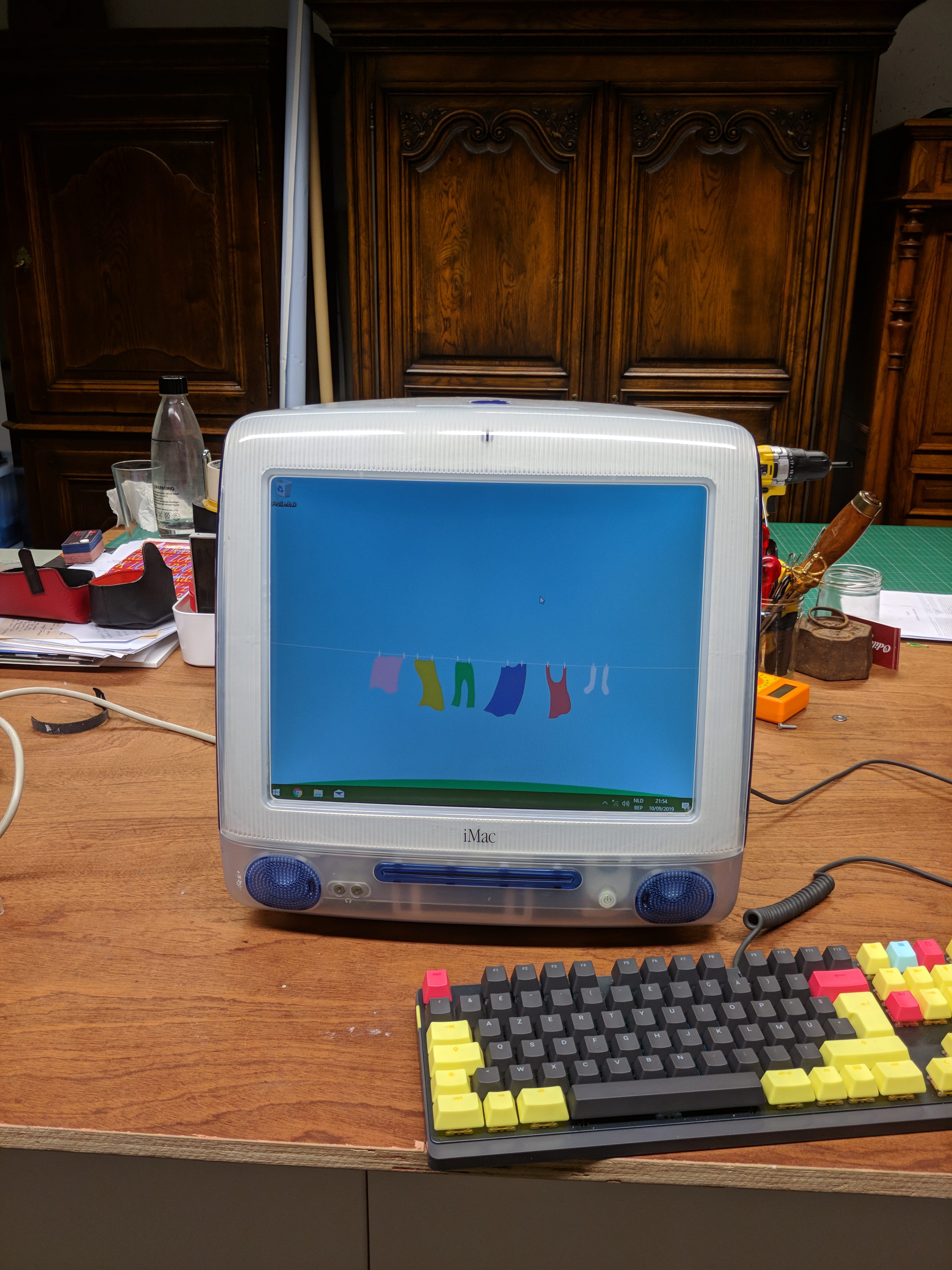
Here's the bad news... This thing gets hot, REALLY hot. Ventilation and airflow are definitely not its strong suit. With the parts I chose to put in there it was simply too hot and so... I had to take it all apart again. My harddrive was frying and the fans were whizzing full-speed non-stop. This wasn't a ̶v̶a̶c̶u̶u̶m̶ ̶c̶l̶e̶a̶n̶e̶r̶ computer I would use every day.
There might have been a way to fix these issues, like adding extra holes and fans, another place to mount the harddrive, but to me that would defeat the purpose because the mod would really take away from the original design. I always wanted this to look just like the original (or as close to it as possible).
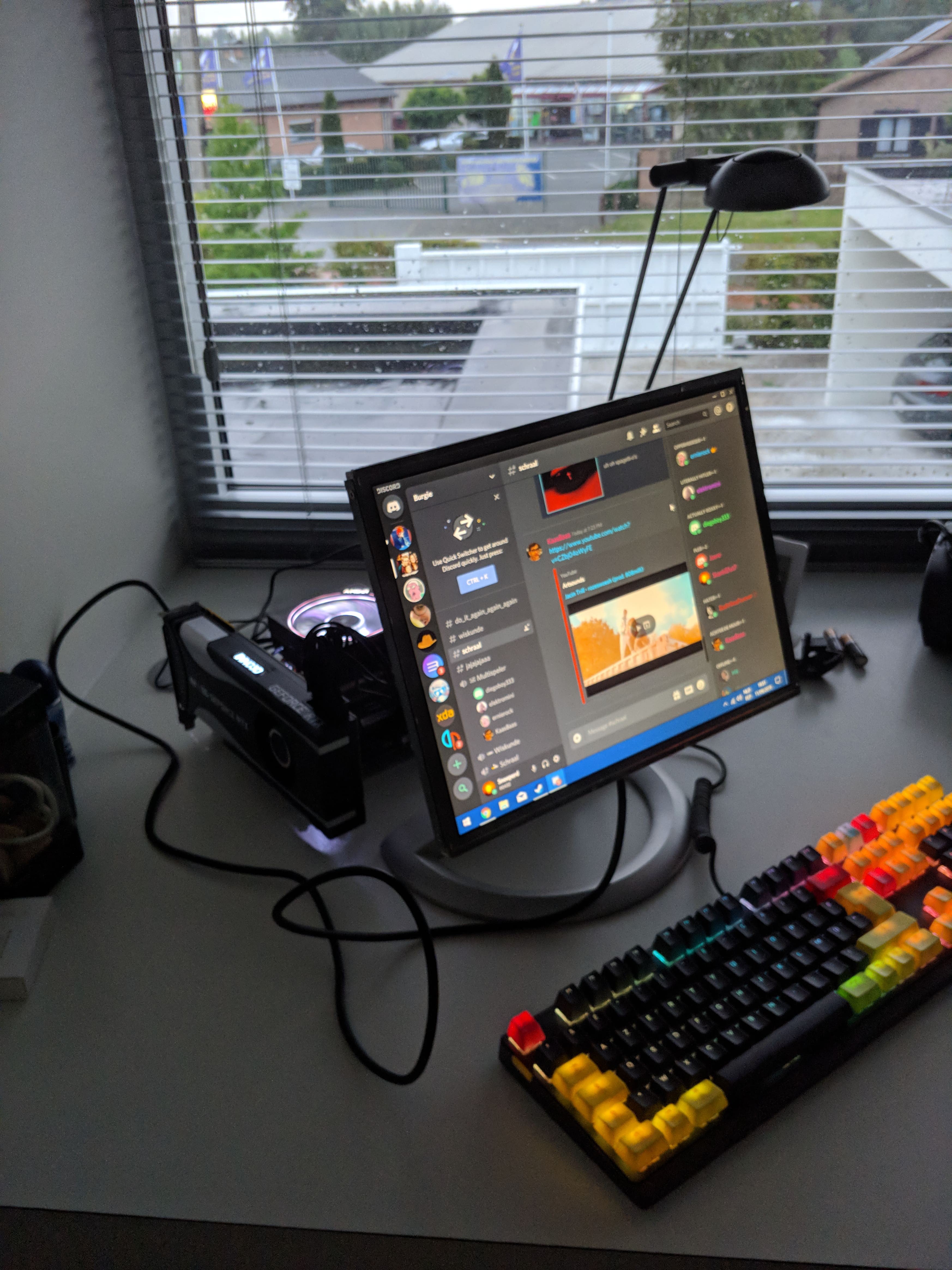
This is my sad computer right now. It is certainly sad, but I'm happy that it isn't loud. Let this be a warning for someone who wants to do this, choose your parts wisely, maybe something very low power or a raspberry pi is better suited for this than a high end gaming pc.
In the end I'm happy I did this build because it taught me a lot about 3d modeling. It's been in the back of my mind since I was 12 and it makes me really happy that I actually made it real. The problems that arose were things I had foreseen, but hoped wouldn't happen. That's just life I guess.
This won't be the end for this mod however. I'm planning on putting something else in the case (like a raspberry pi) so my efforts won't have been for nothing after all. Expect another project log sometime in the future.
 Cedric Anné
Cedric Anné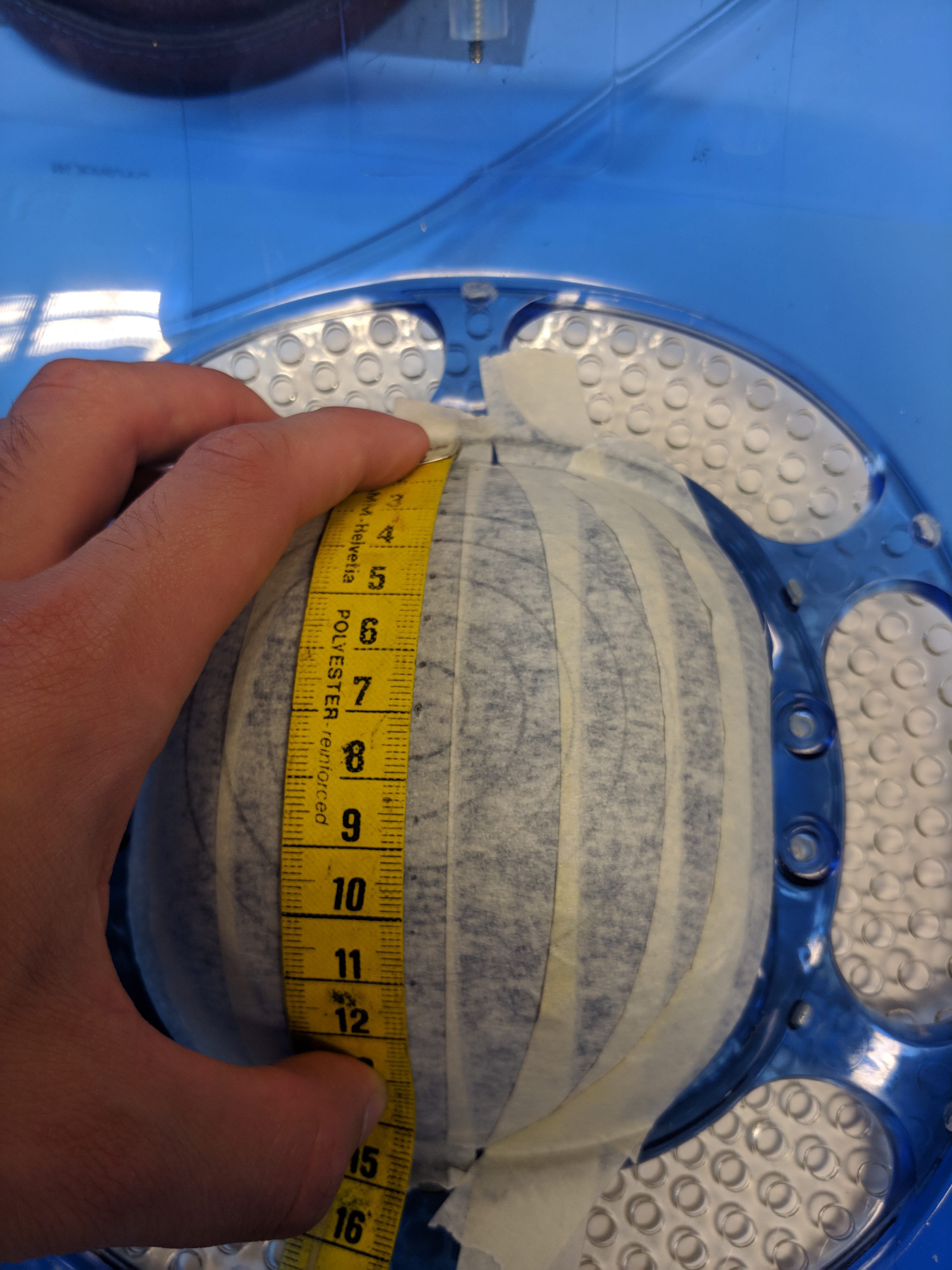 I tried measuring by hand, but that turned out to be a hasstle, so I made a template (like one on those strands of people holding hands you make as a kid) that would show me where to drill holes in a hexagonal pattern.
I tried measuring by hand, but that turned out to be a hasstle, so I made a template (like one on those strands of people holding hands you make as a kid) that would show me where to drill holes in a hexagonal pattern.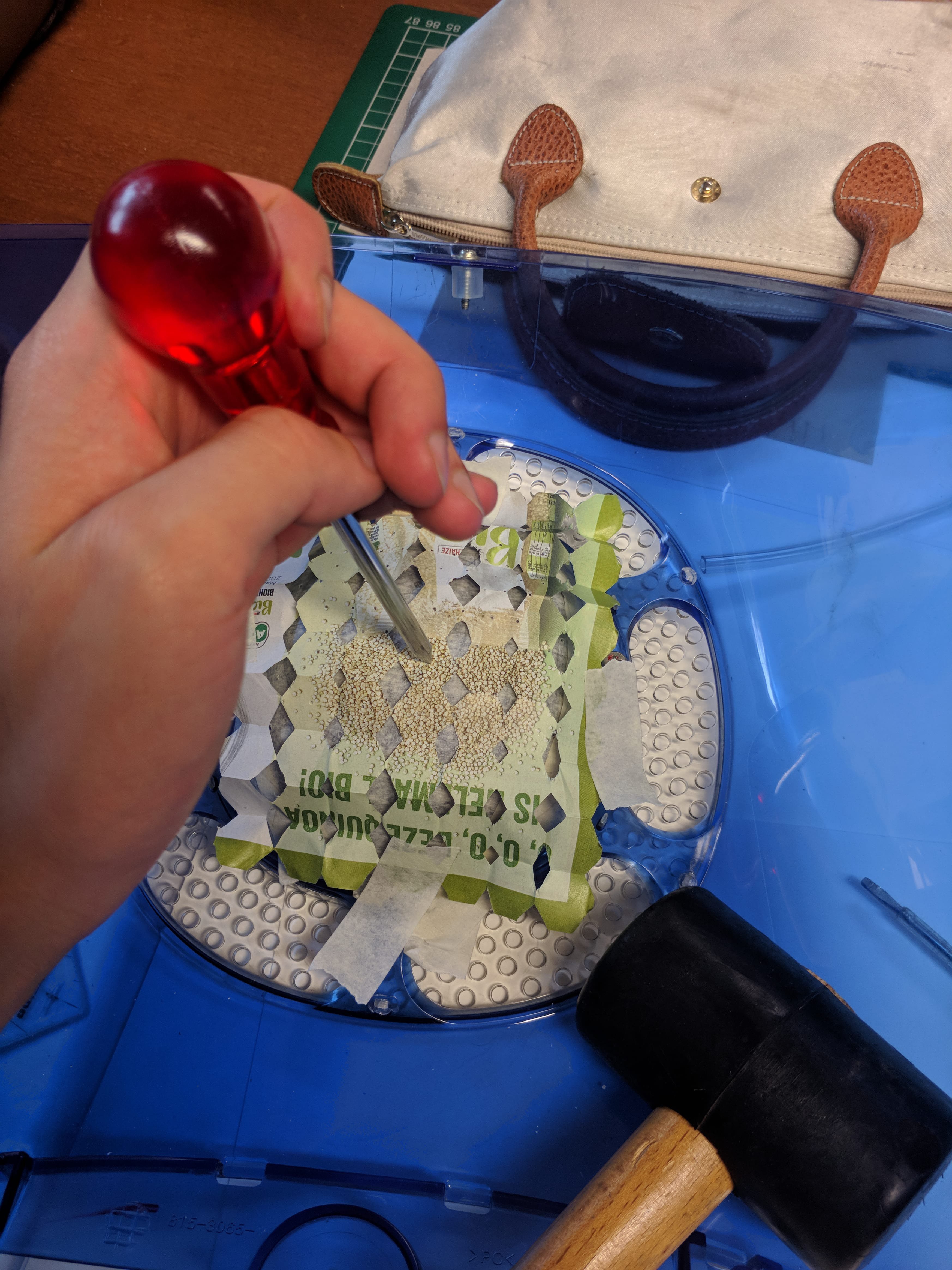 The finished product should look something like this (this is with the arms for the 200mm fan attached).
The finished product should look something like this (this is with the arms for the 200mm fan attached).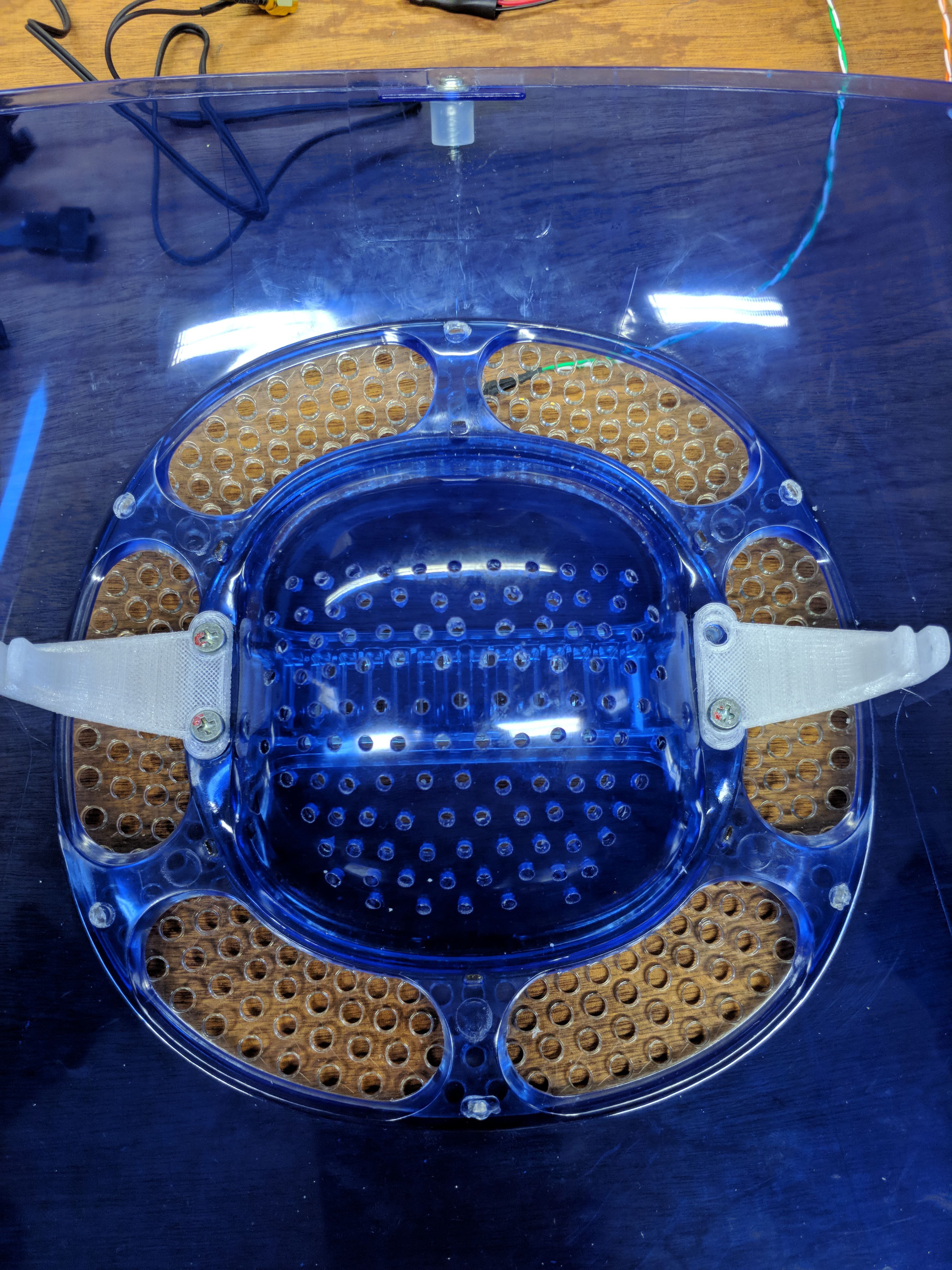
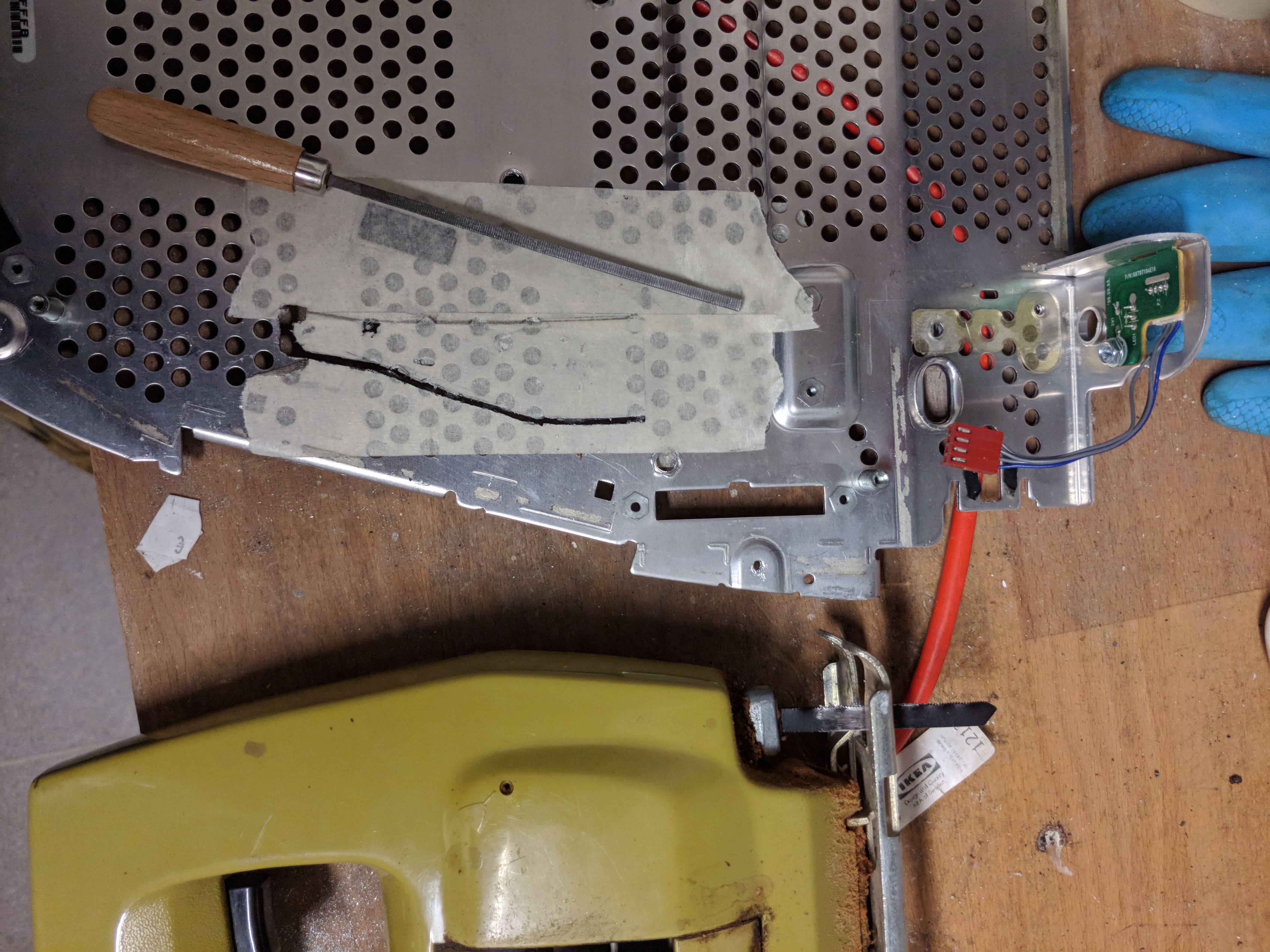
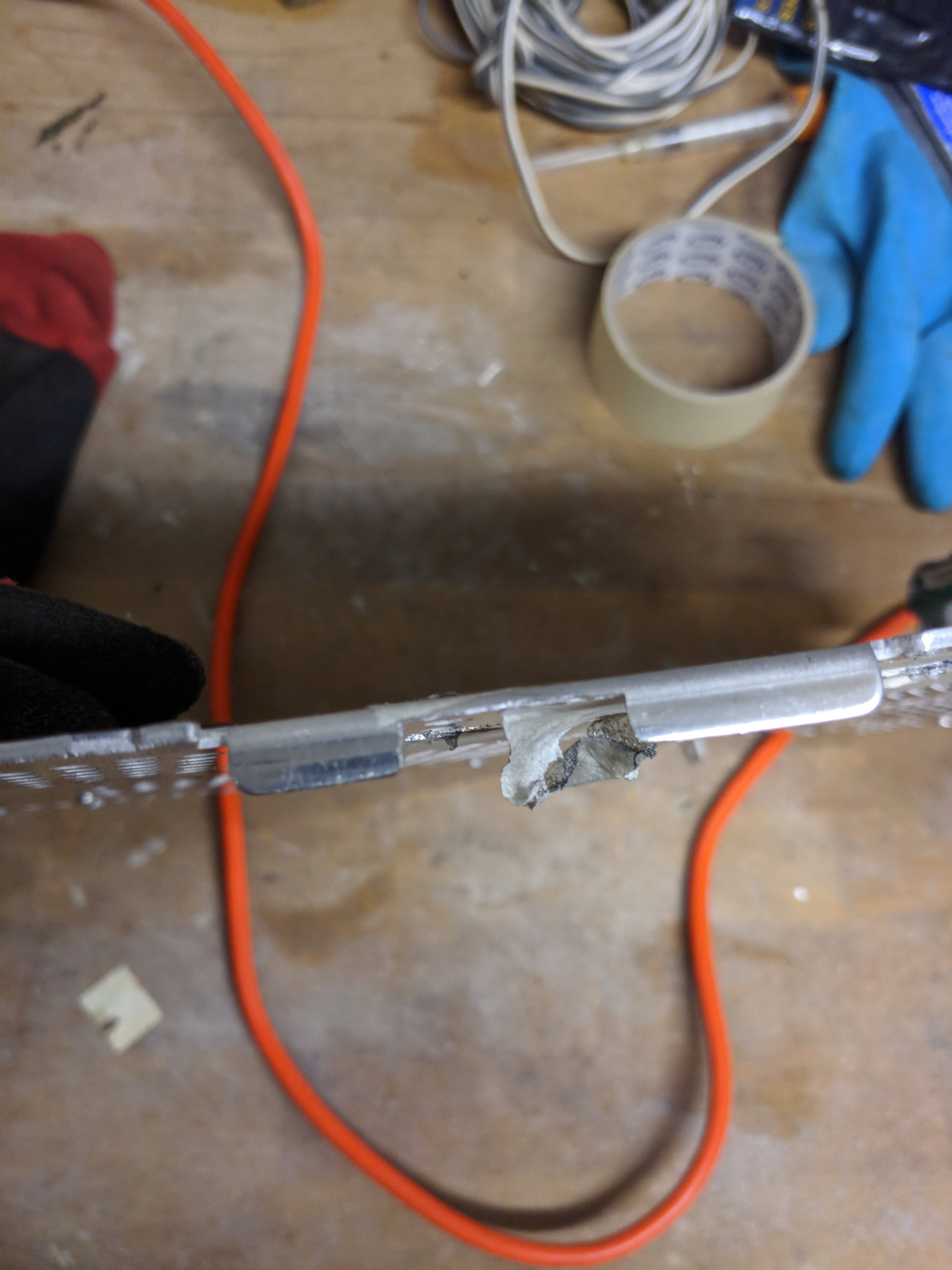
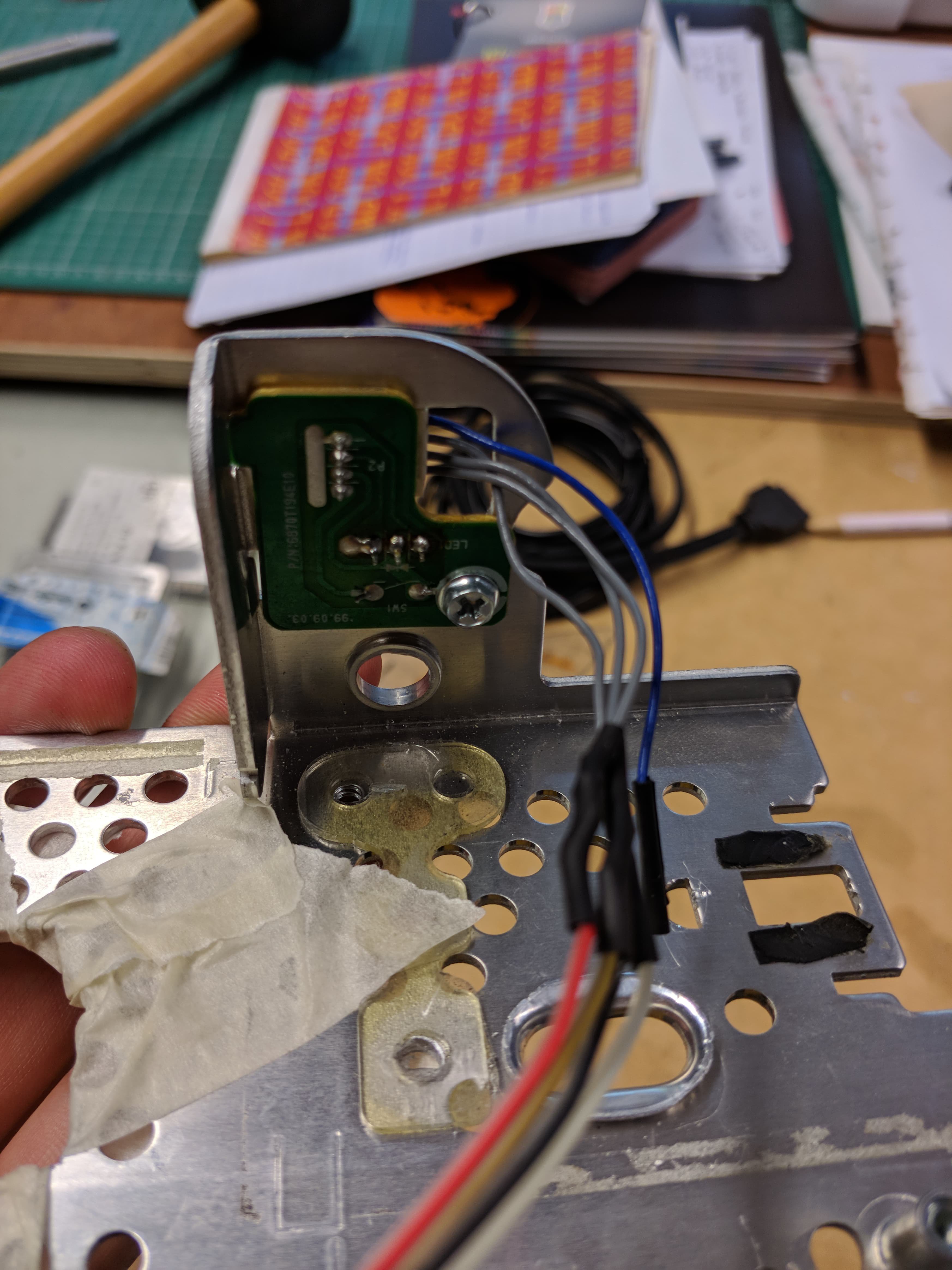
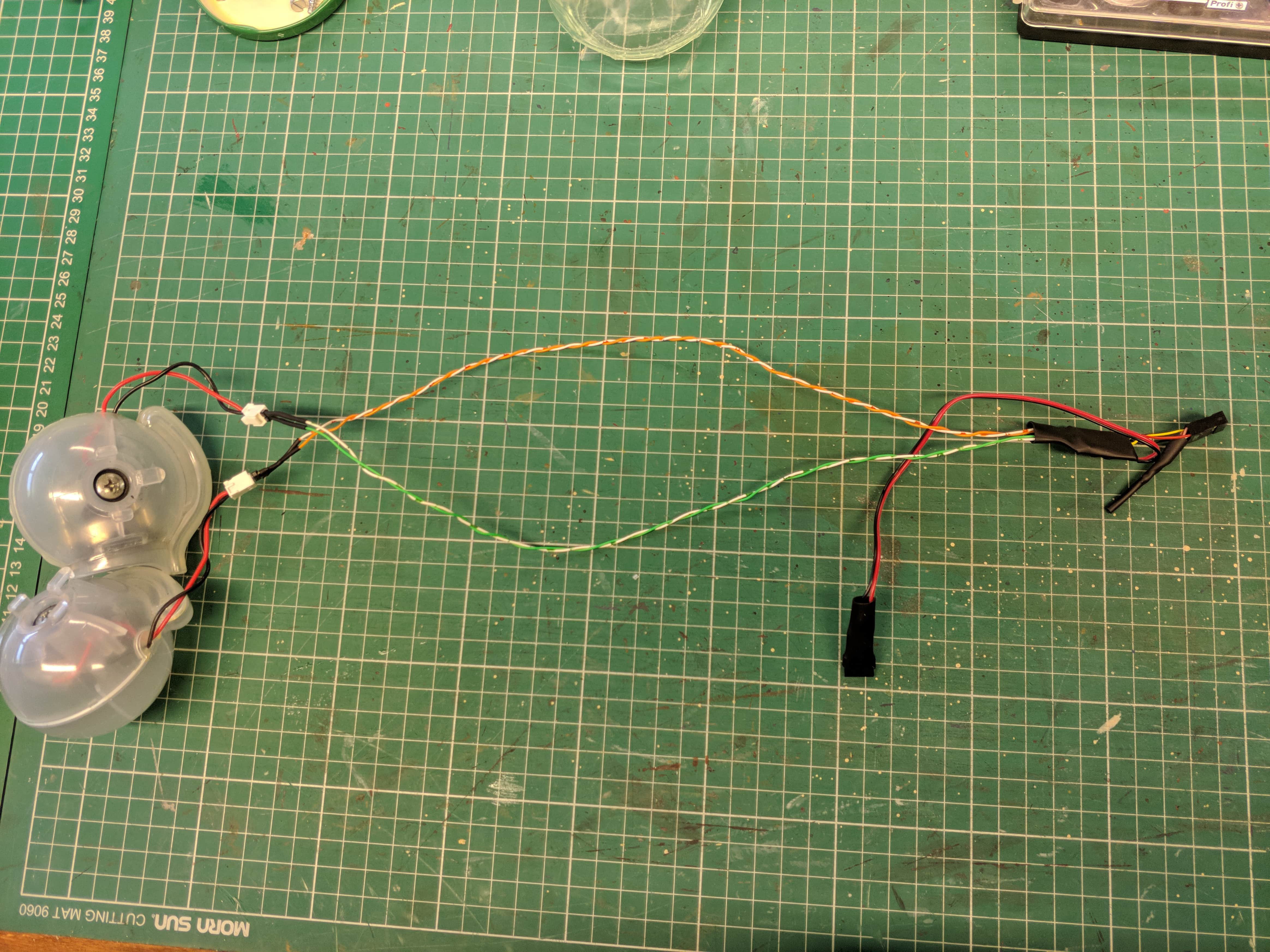
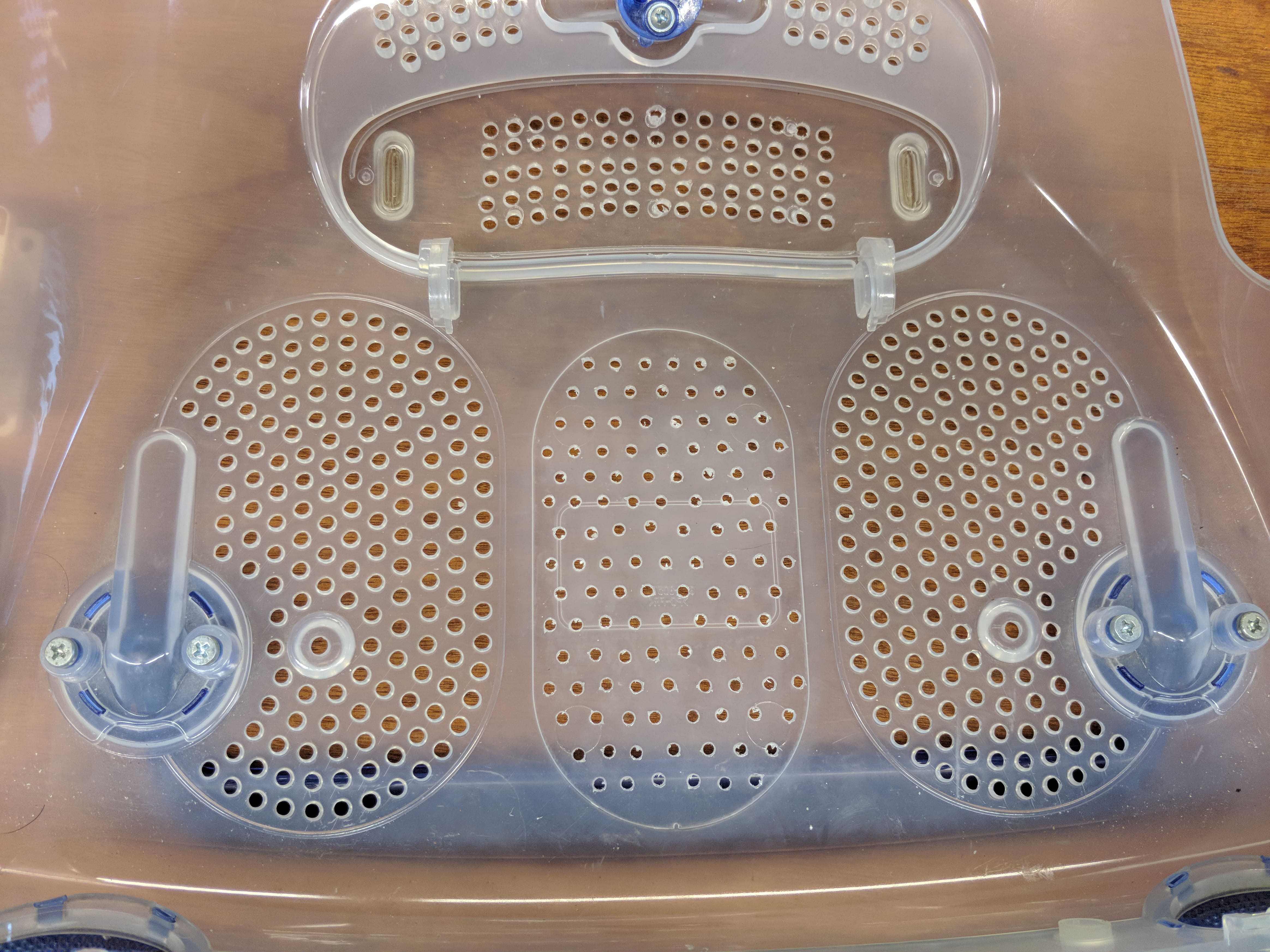
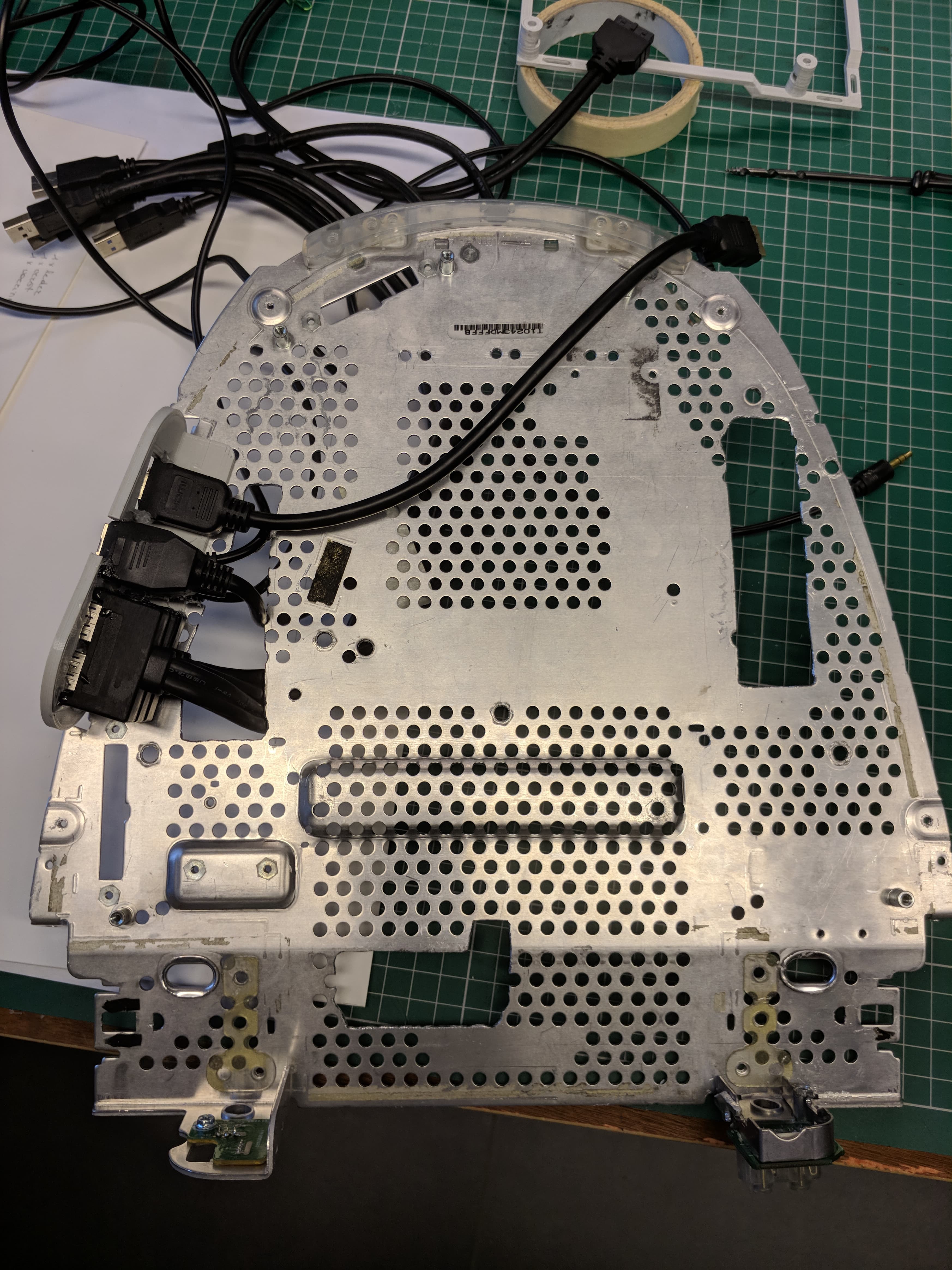
 The front (directed towards the back of the iMac) wasn't that bad. The back however...
The front (directed towards the back of the iMac) wasn't that bad. The back however... 
 As you can see I used metal brackets on this one instead of 3d printed angles. That's because the PETG I was printing in kept breaking on that spot and this was on day 4 and I got tired of waiting for the printer. I might update the model (this is also a model with a part cut off and holes drilled into it)... or I might not... We'll see :P
As you can see I used metal brackets on this one instead of 3d printed angles. That's because the PETG I was printing in kept breaking on that spot and this was on day 4 and I got tired of waiting for the printer. I might update the model (this is also a model with a part cut off and holes drilled into it)... or I might not... We'll see :P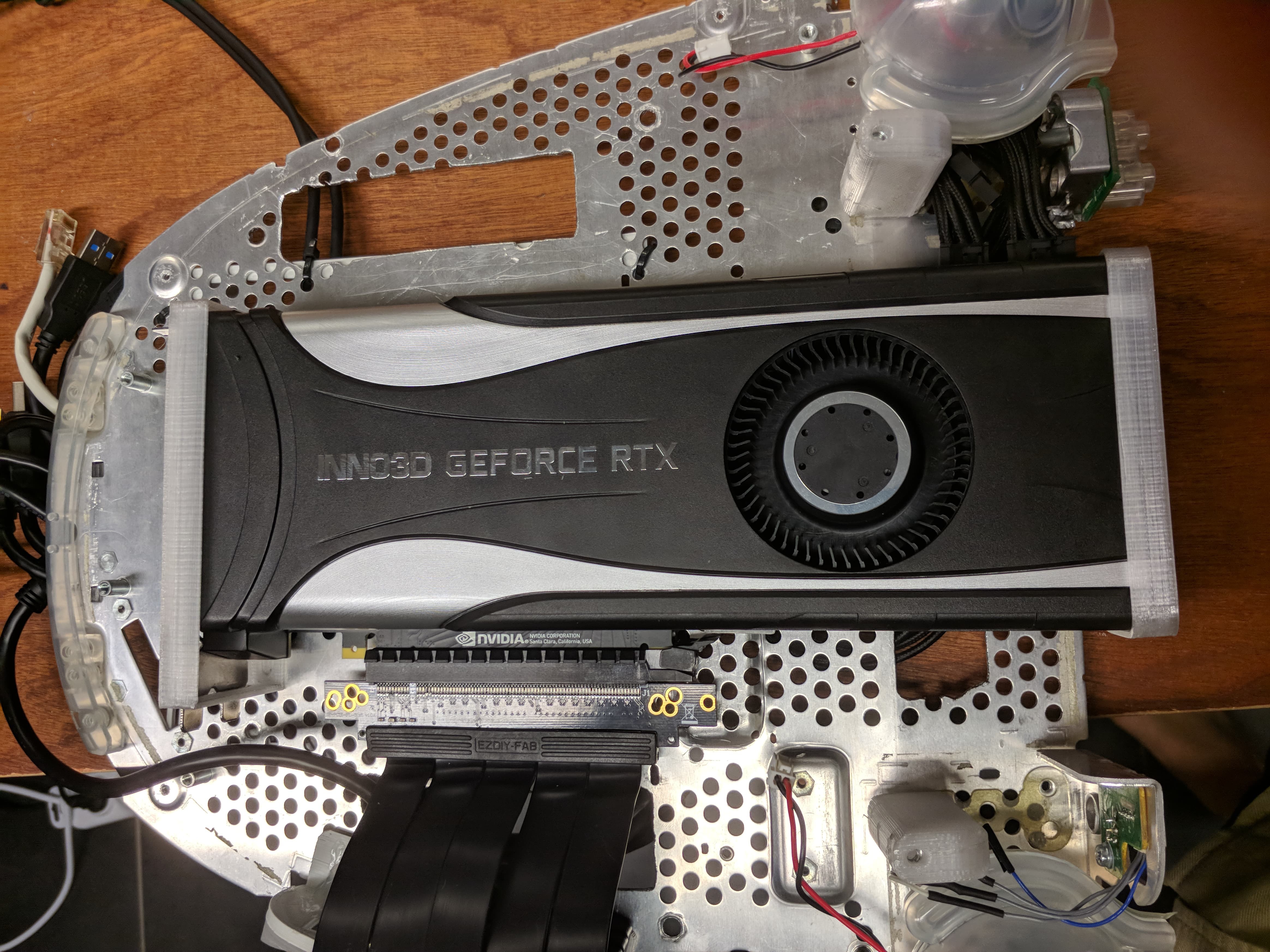 When adding in the GPU it's also important to have the power cable and PCIe extension already plugged in. It's so tight in there that I couldn't get to the connectors when it was screwed in.
When adding in the GPU it's also important to have the power cable and PCIe extension already plugged in. It's so tight in there that I couldn't get to the connectors when it was screwed in.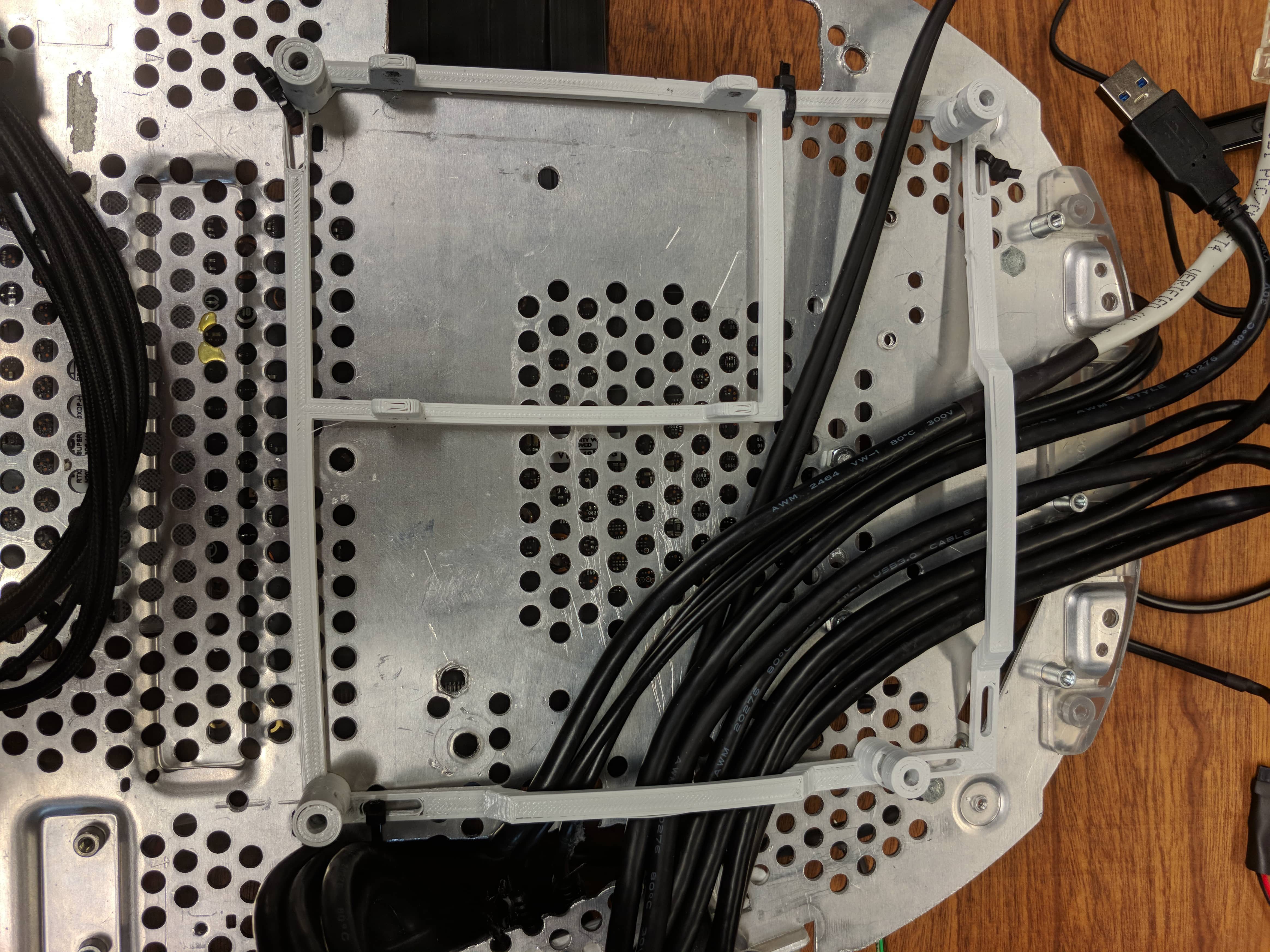
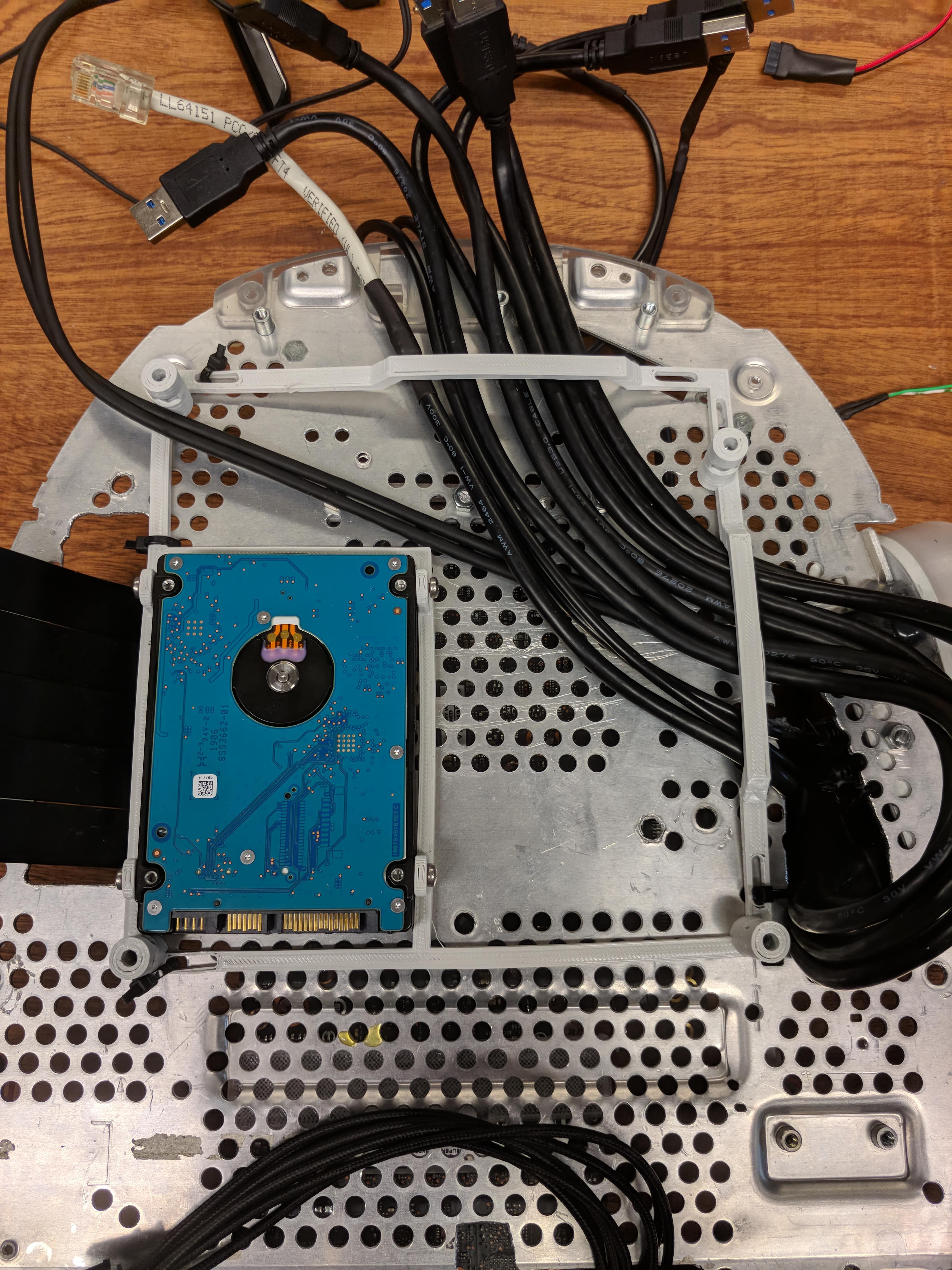
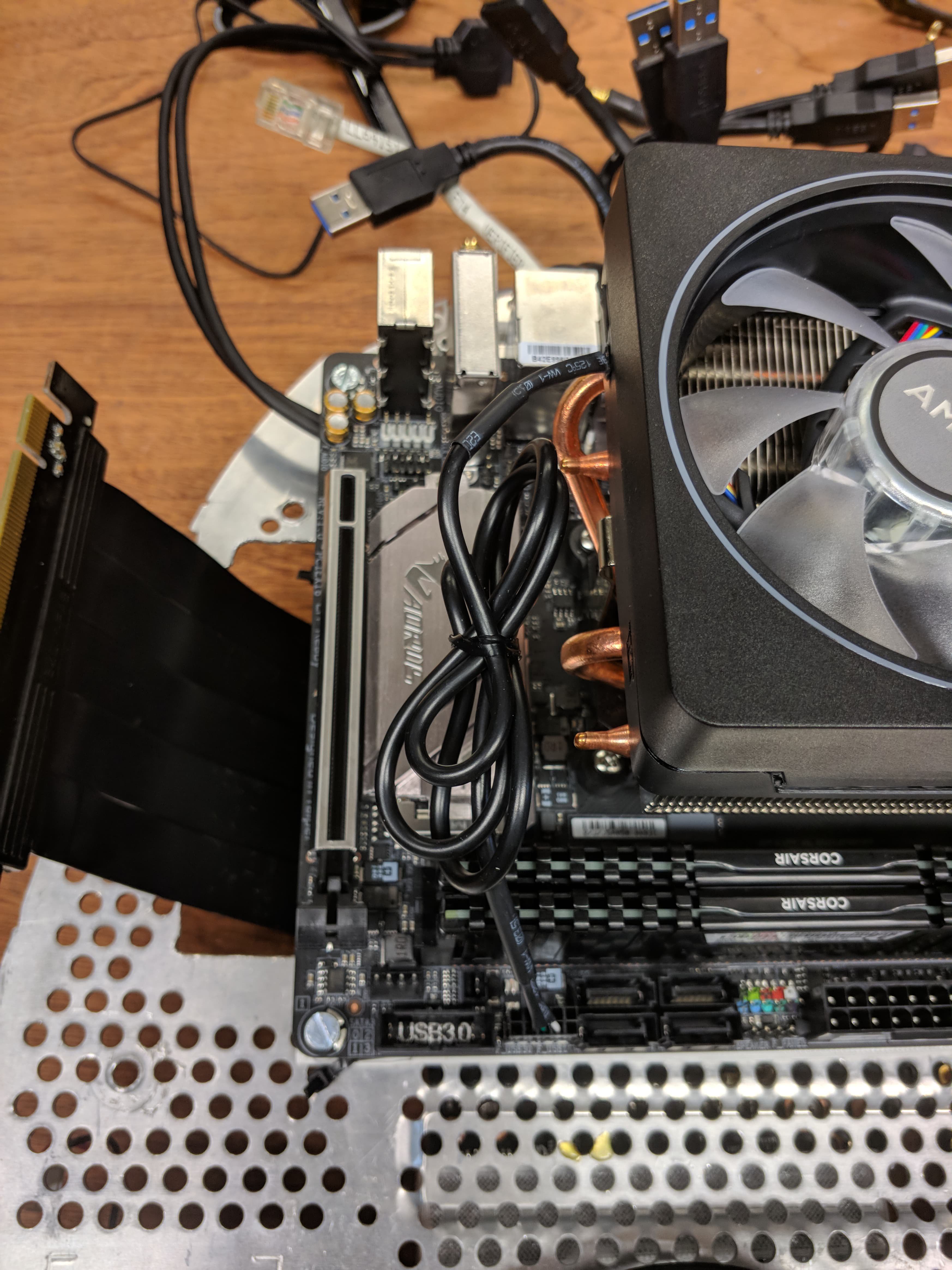
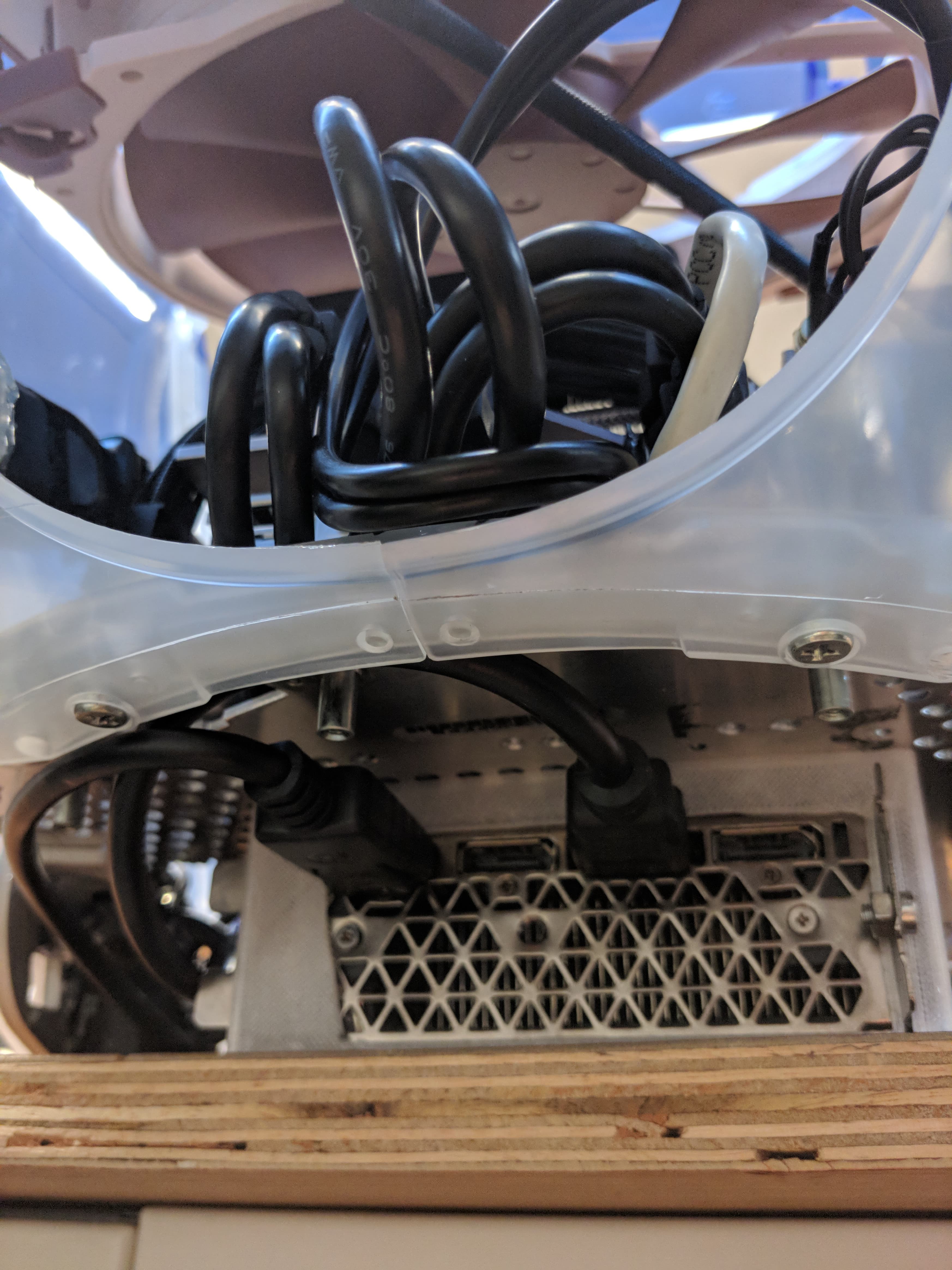
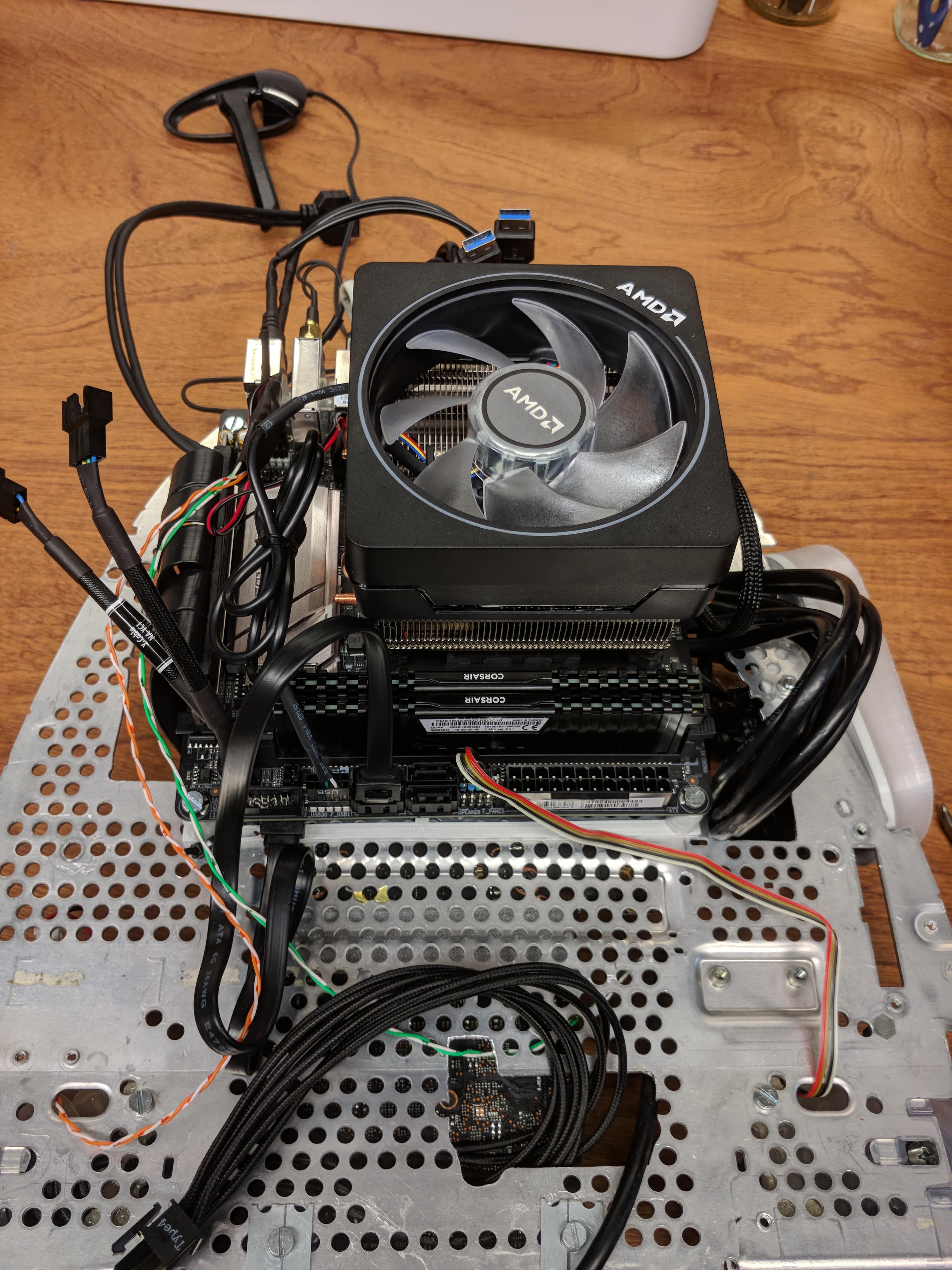 If you have it, also add the wifi antenna.
If you have it, also add the wifi antenna. 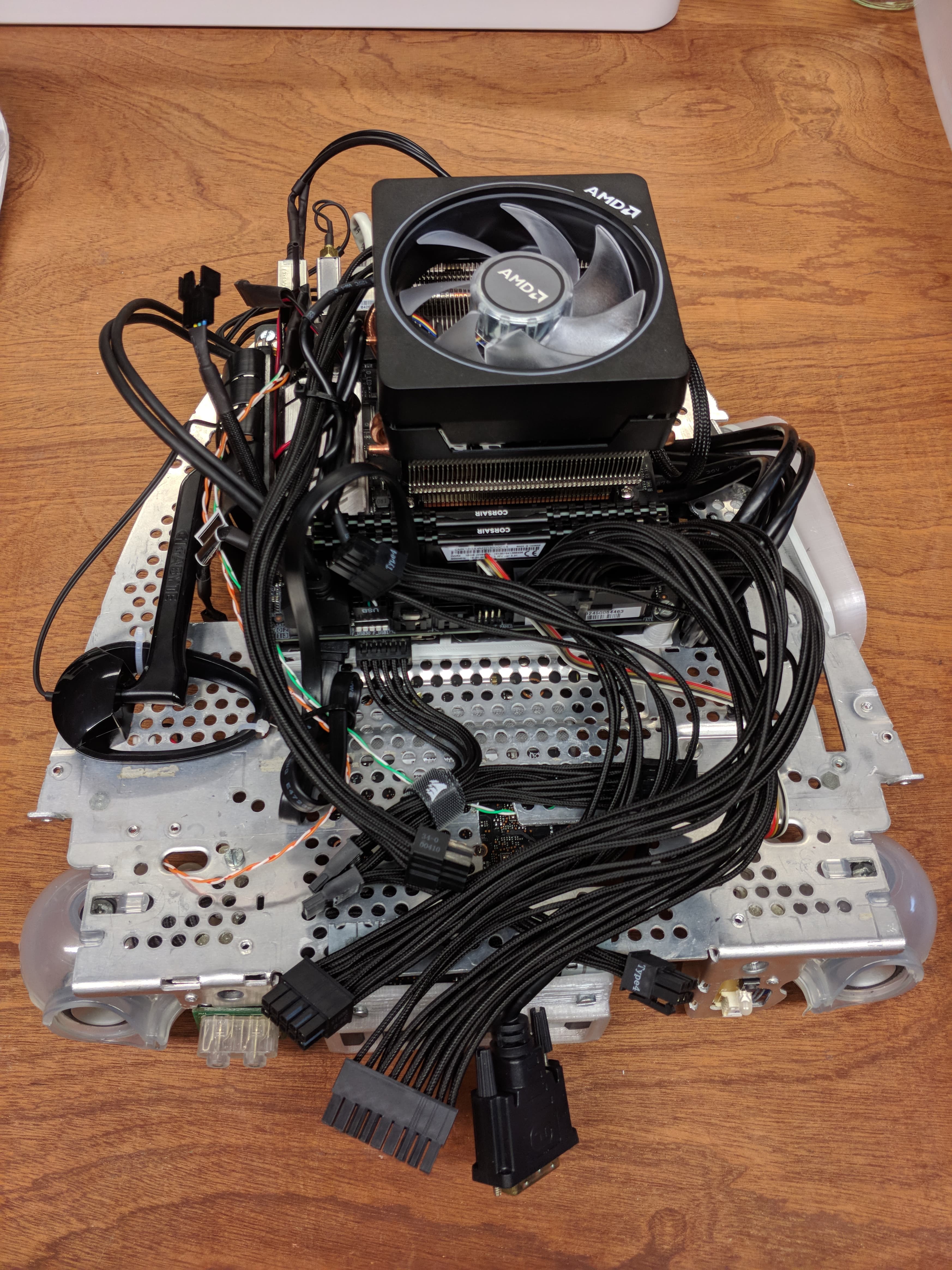 And then try and manage those cables as best you can. I promise it won't be easy ;)
And then try and manage those cables as best you can. I promise it won't be easy ;)

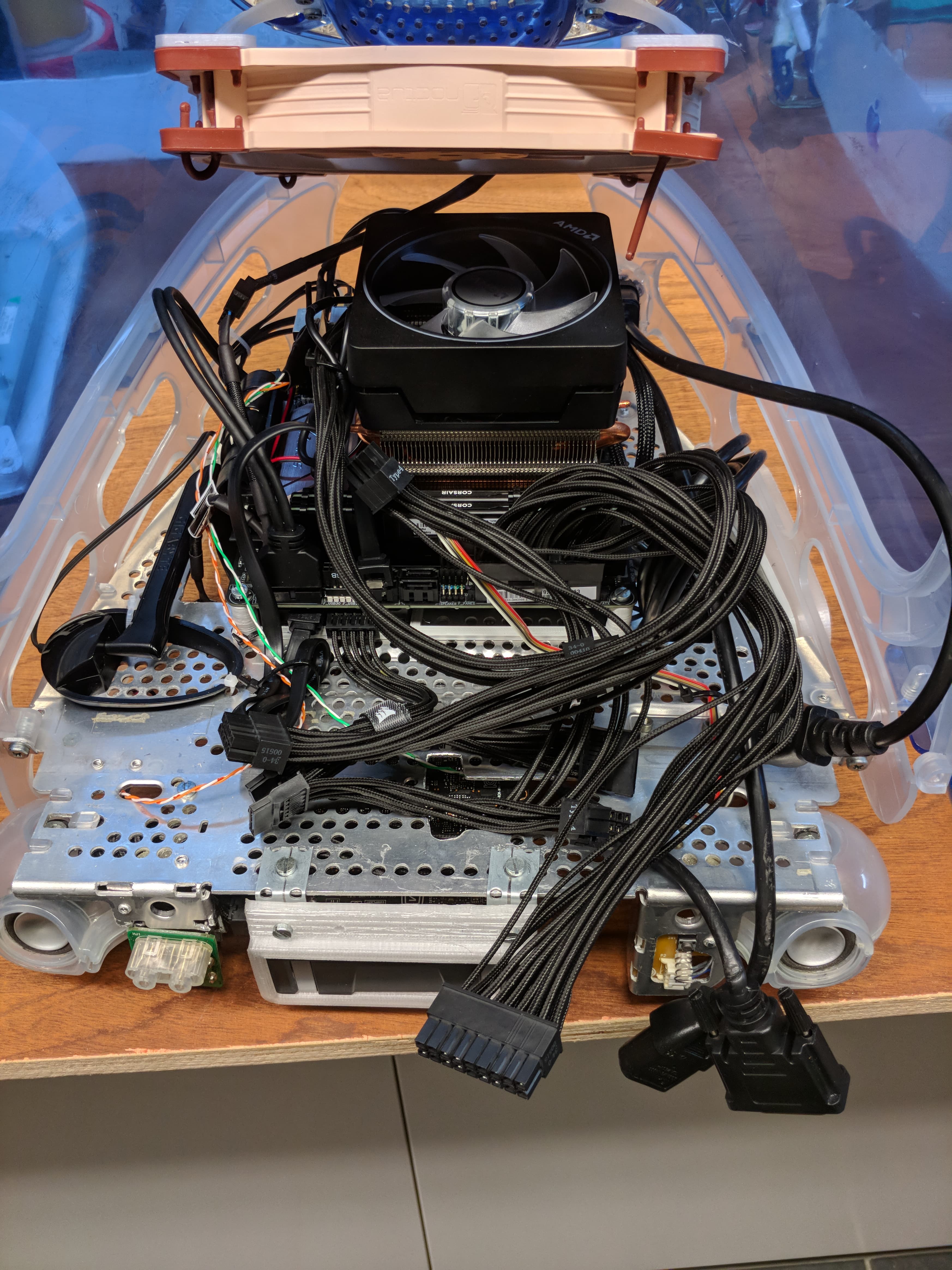 There's 4 screws to get here: 2 on the front
There's 4 screws to get here: 2 on the front  and 2 on the back.
and 2 on the back.  It should just pop into place with those 2 tiny plastic alignment bumps.
It should just pop into place with those 2 tiny plastic alignment bumps.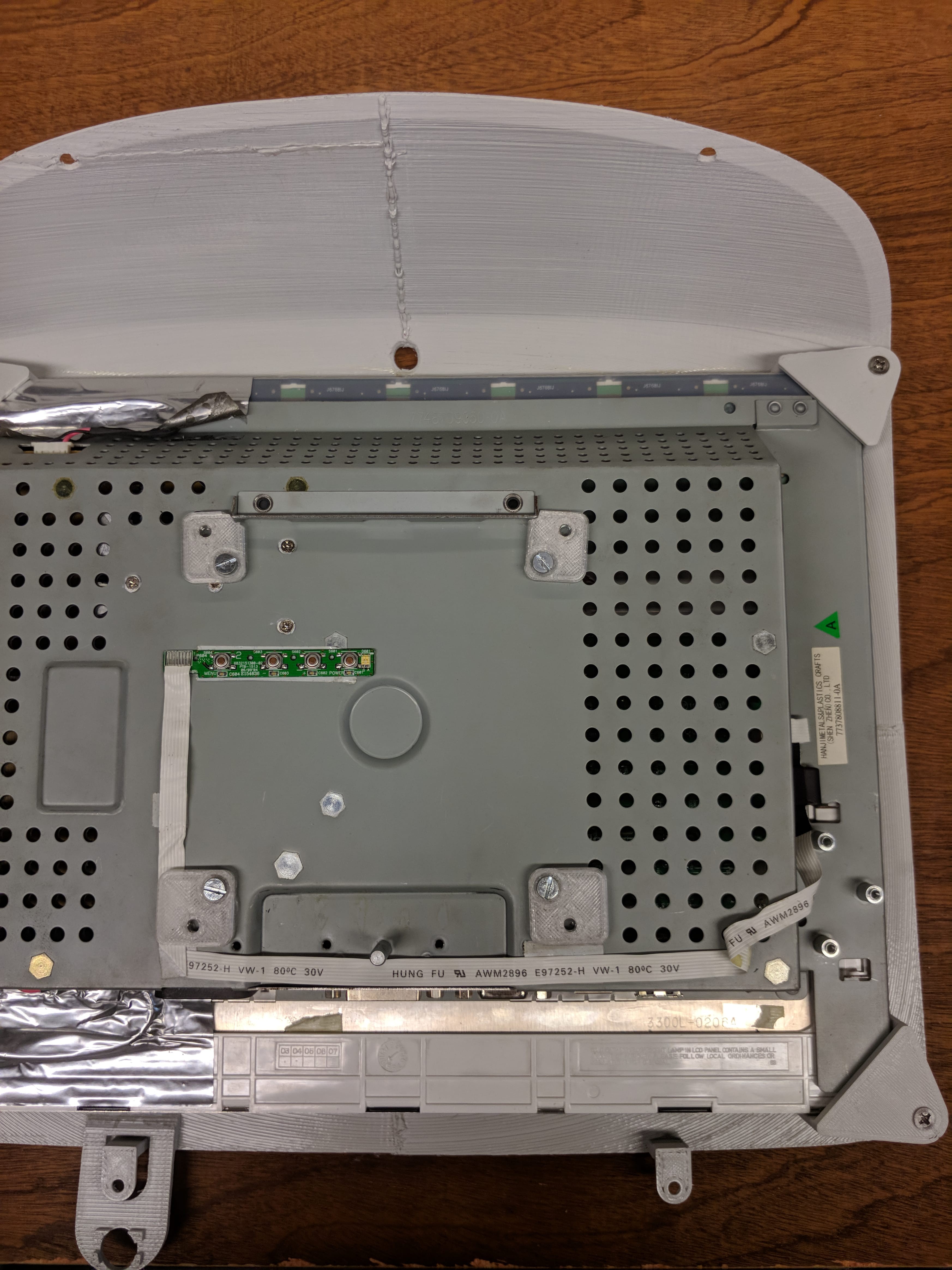 These models are also not correct, because I had to rotate the PSU to fit inside. I might still change the models on github.
These models are also not correct, because I had to rotate the PSU to fit inside. I might still change the models on github. 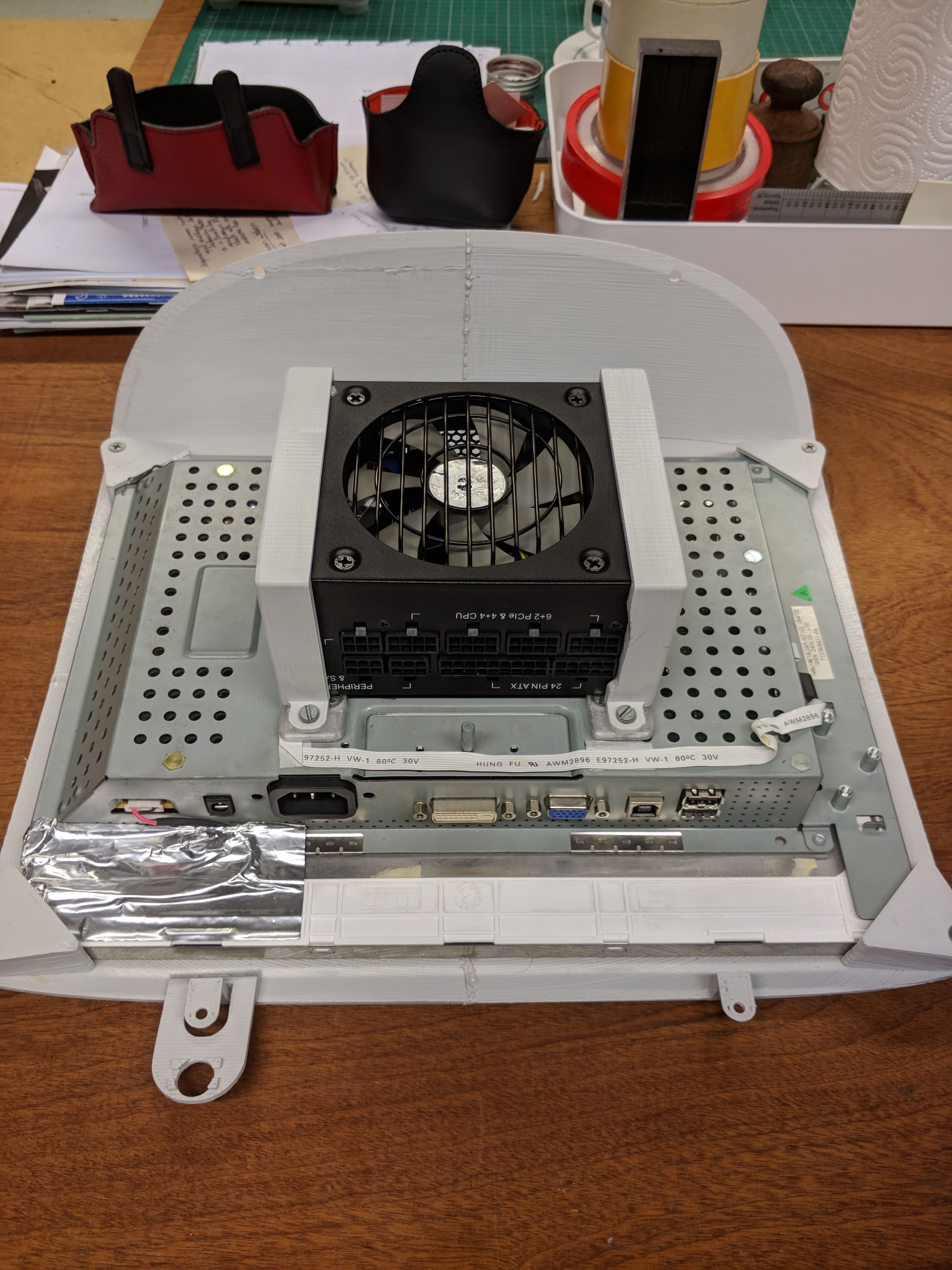


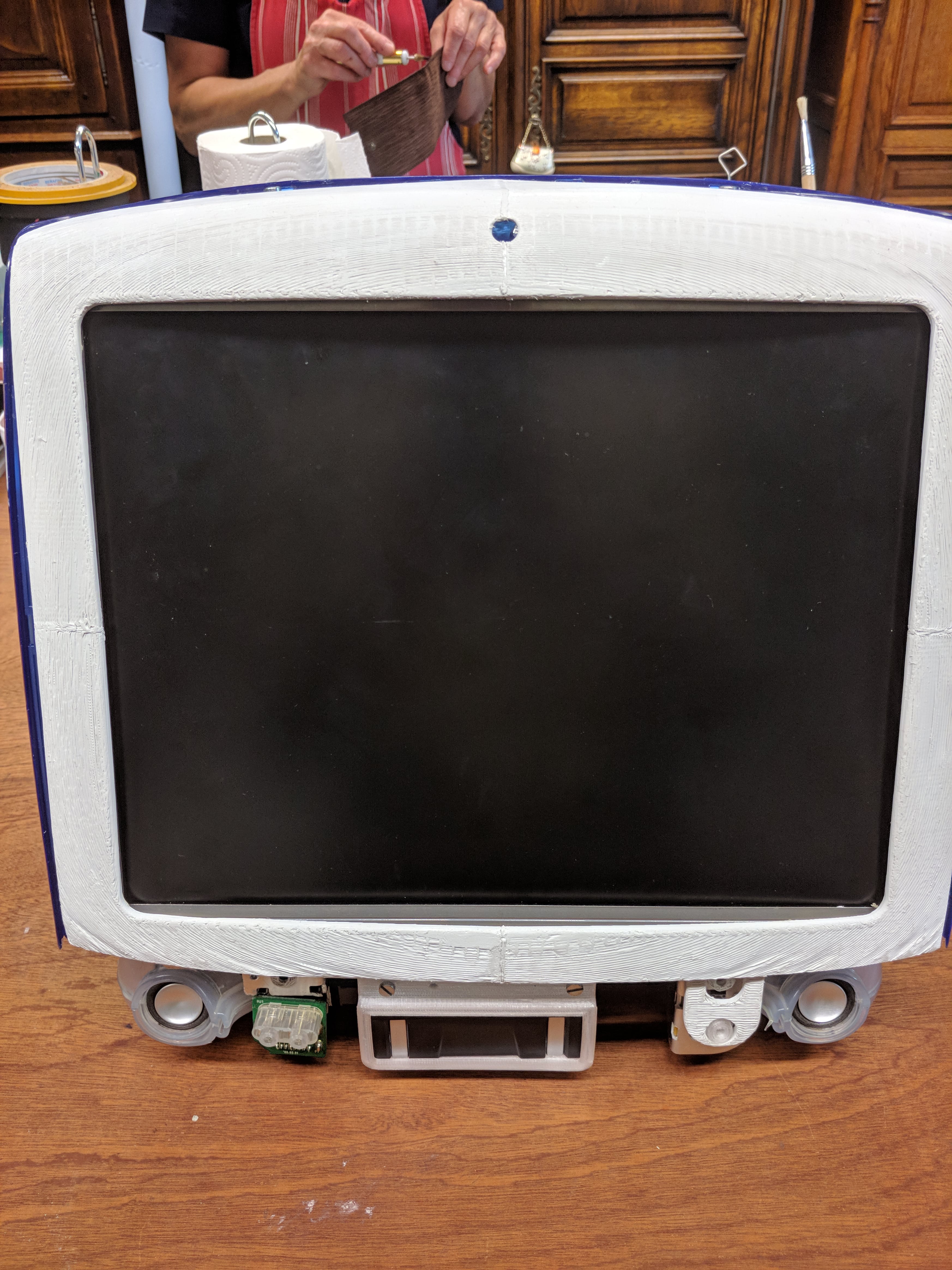
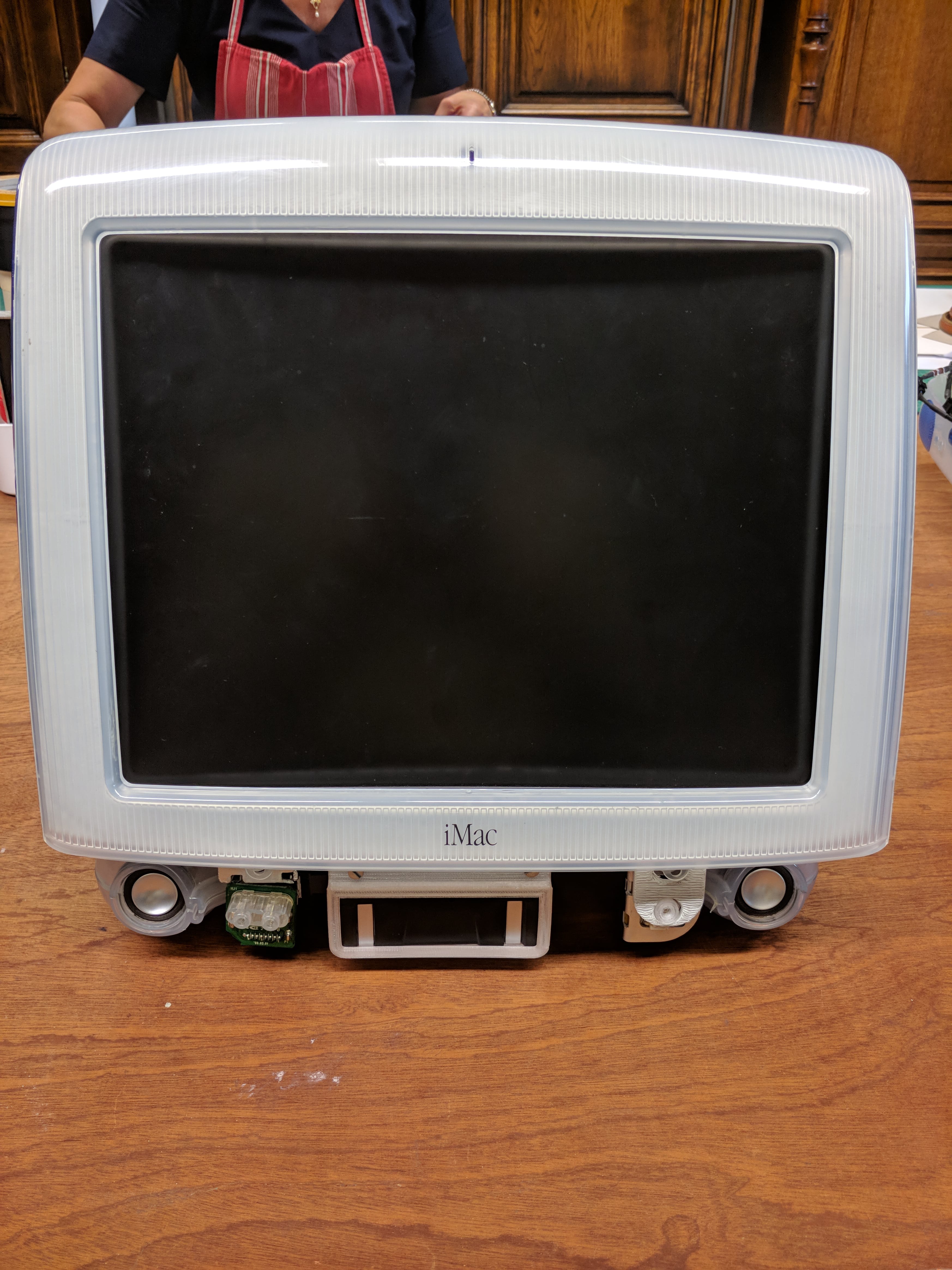
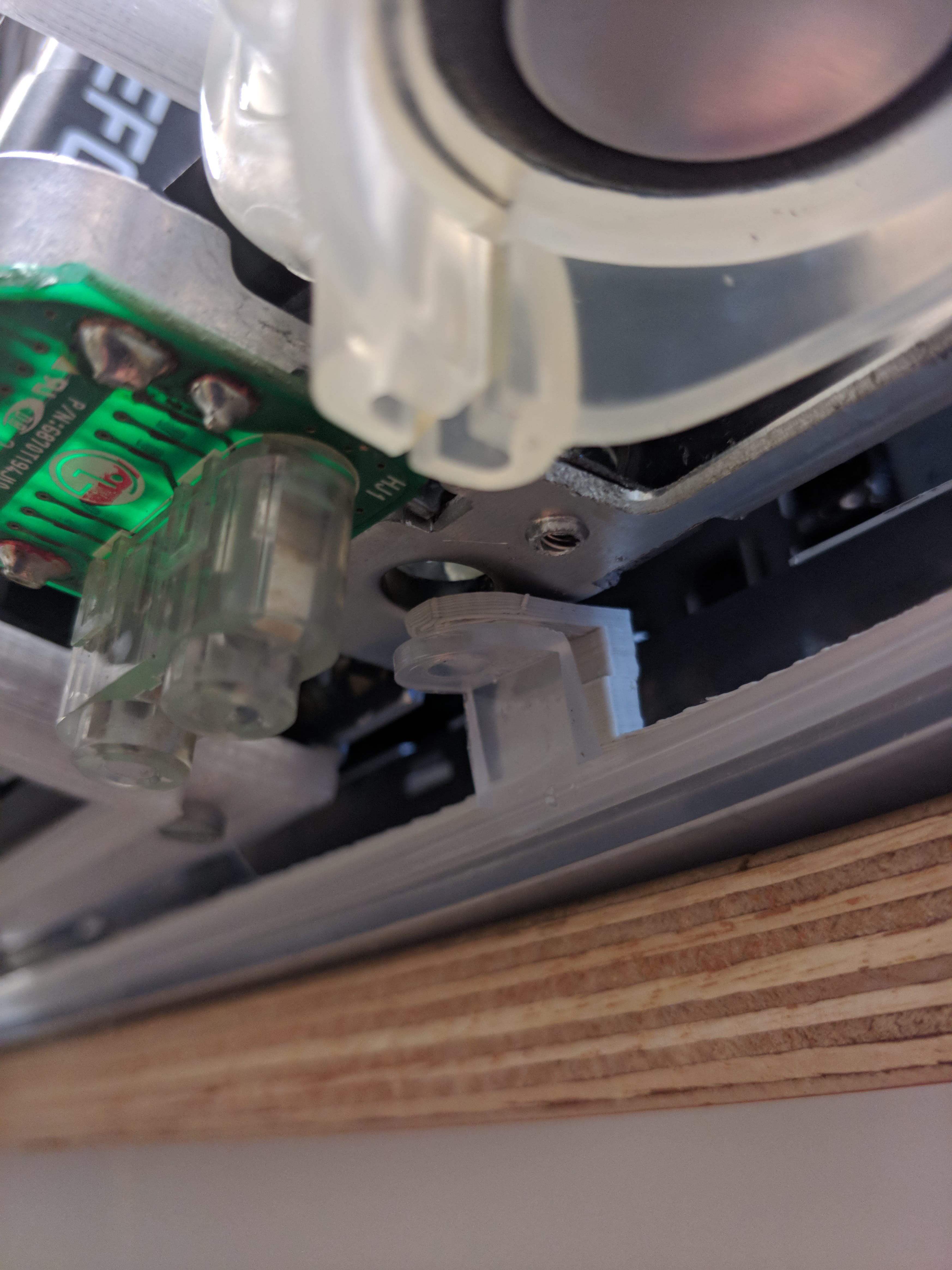 Now fasten the front with some bolts, nuts and washers.
Now fasten the front with some bolts, nuts and washers. 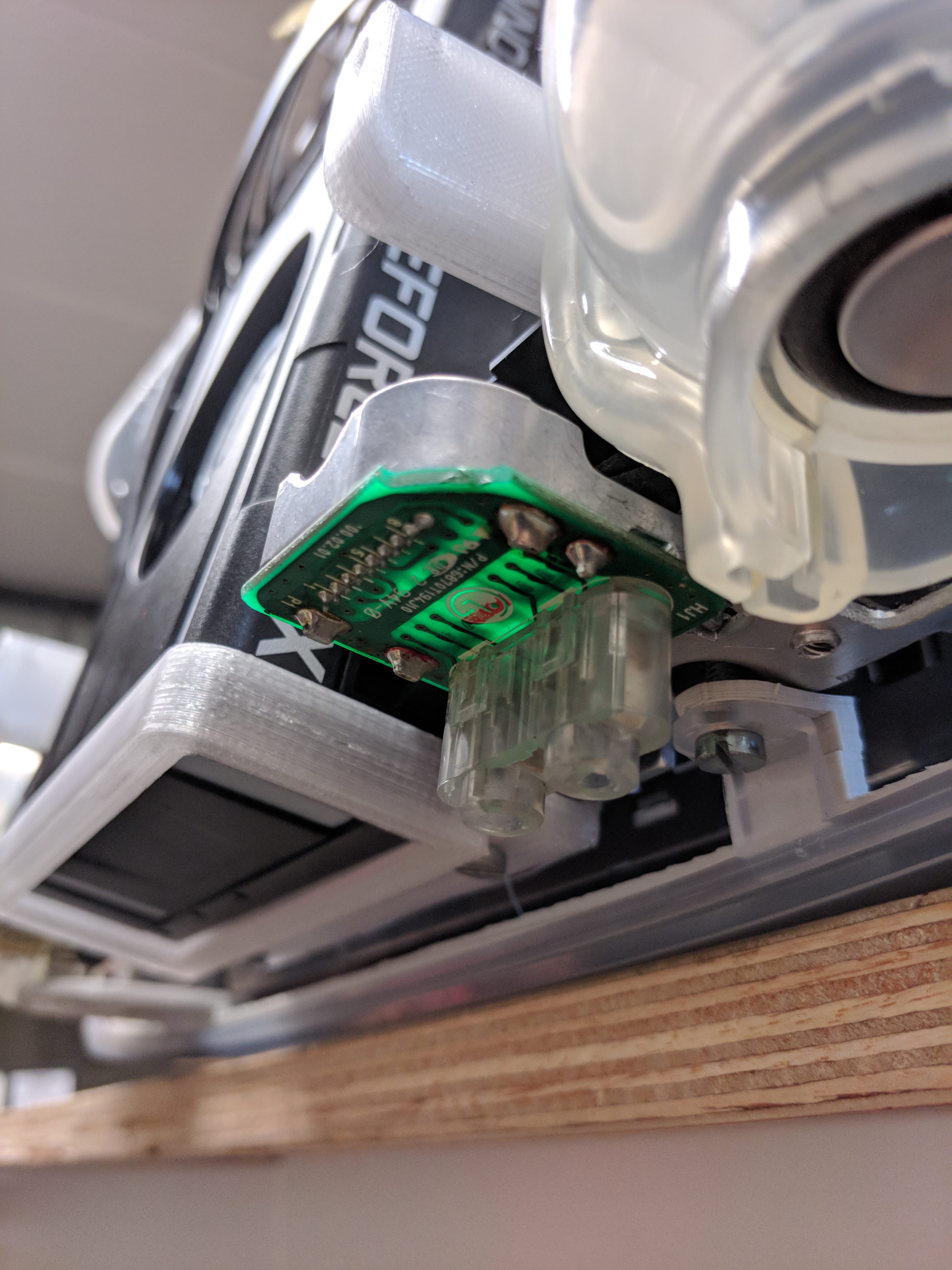
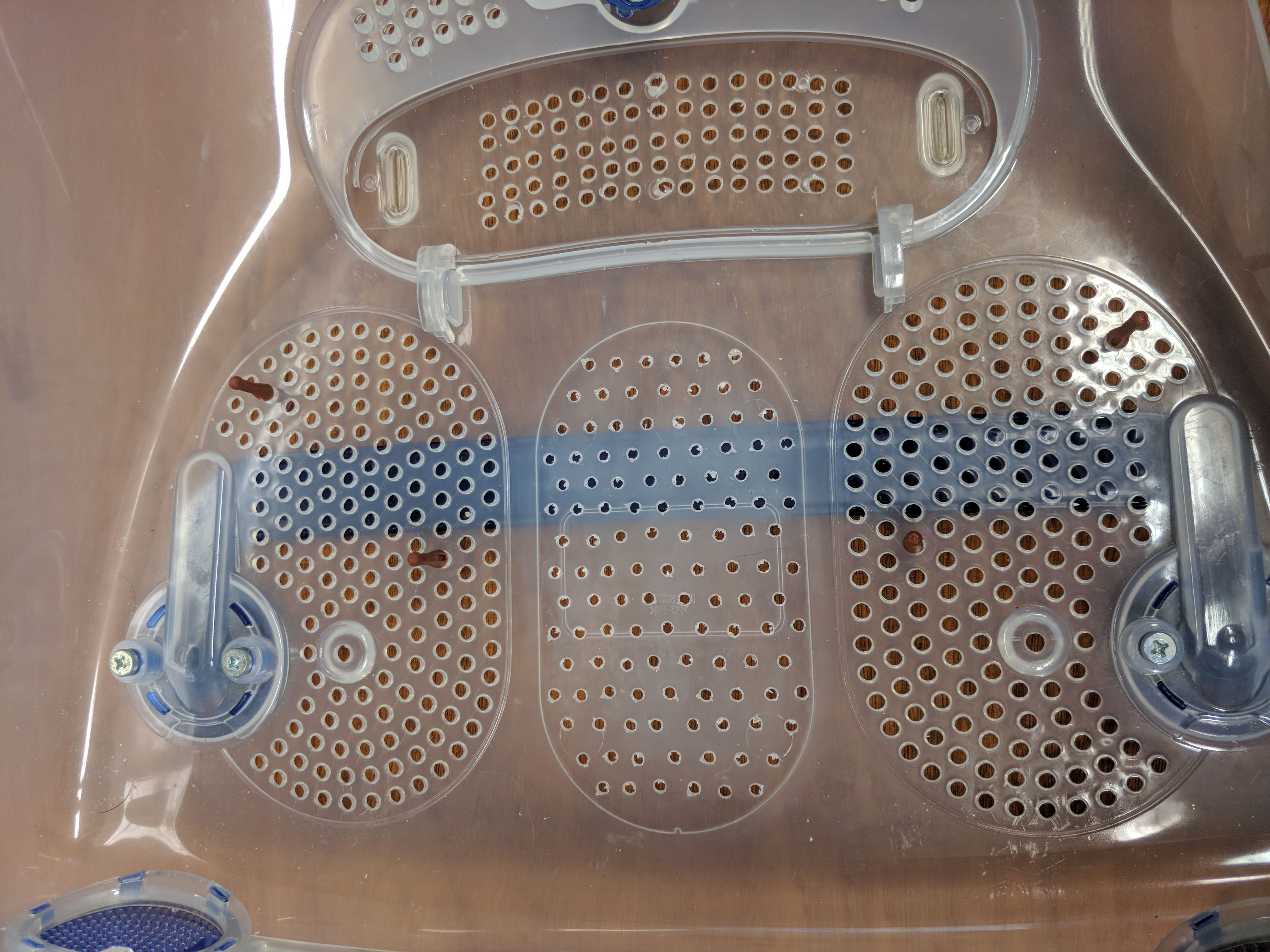
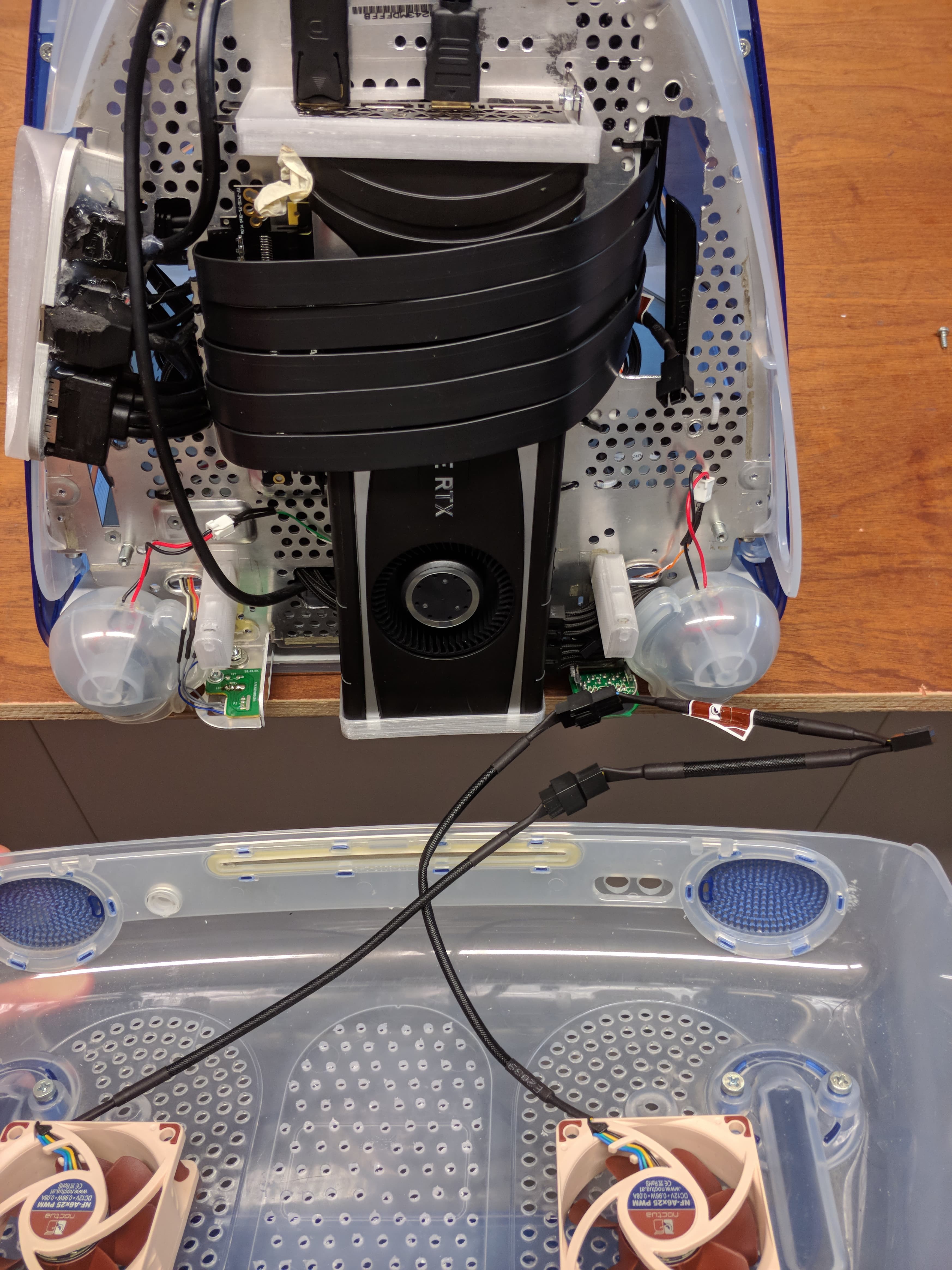 Now put the bottom on there and screw in the bottom screws first (near the speakers)
Now put the bottom on there and screw in the bottom screws first (near the speakers) 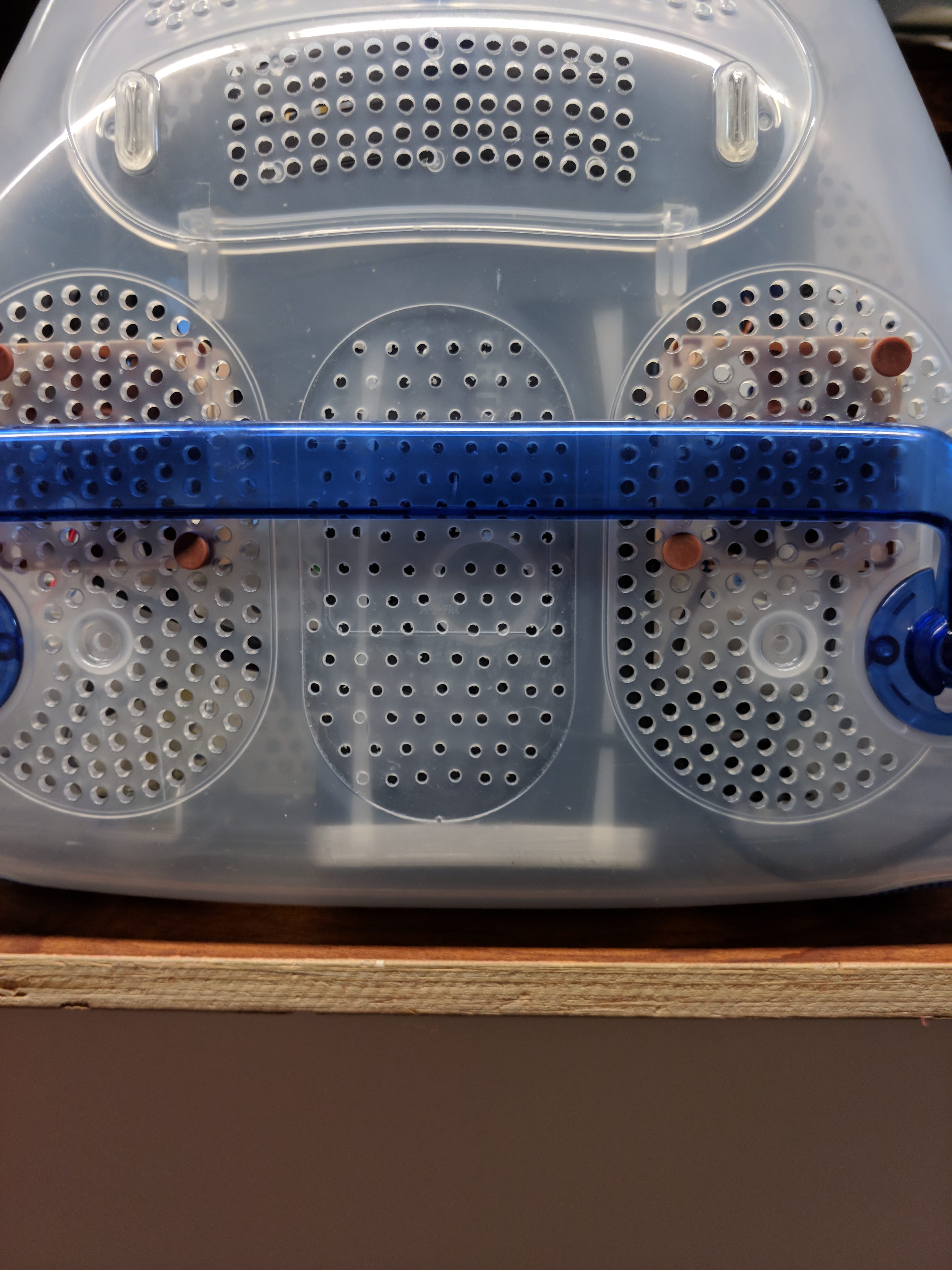 When those are secure, move on to the back and screw in the last two screws. You're done!
When those are secure, move on to the back and screw in the last two screws. You're done! 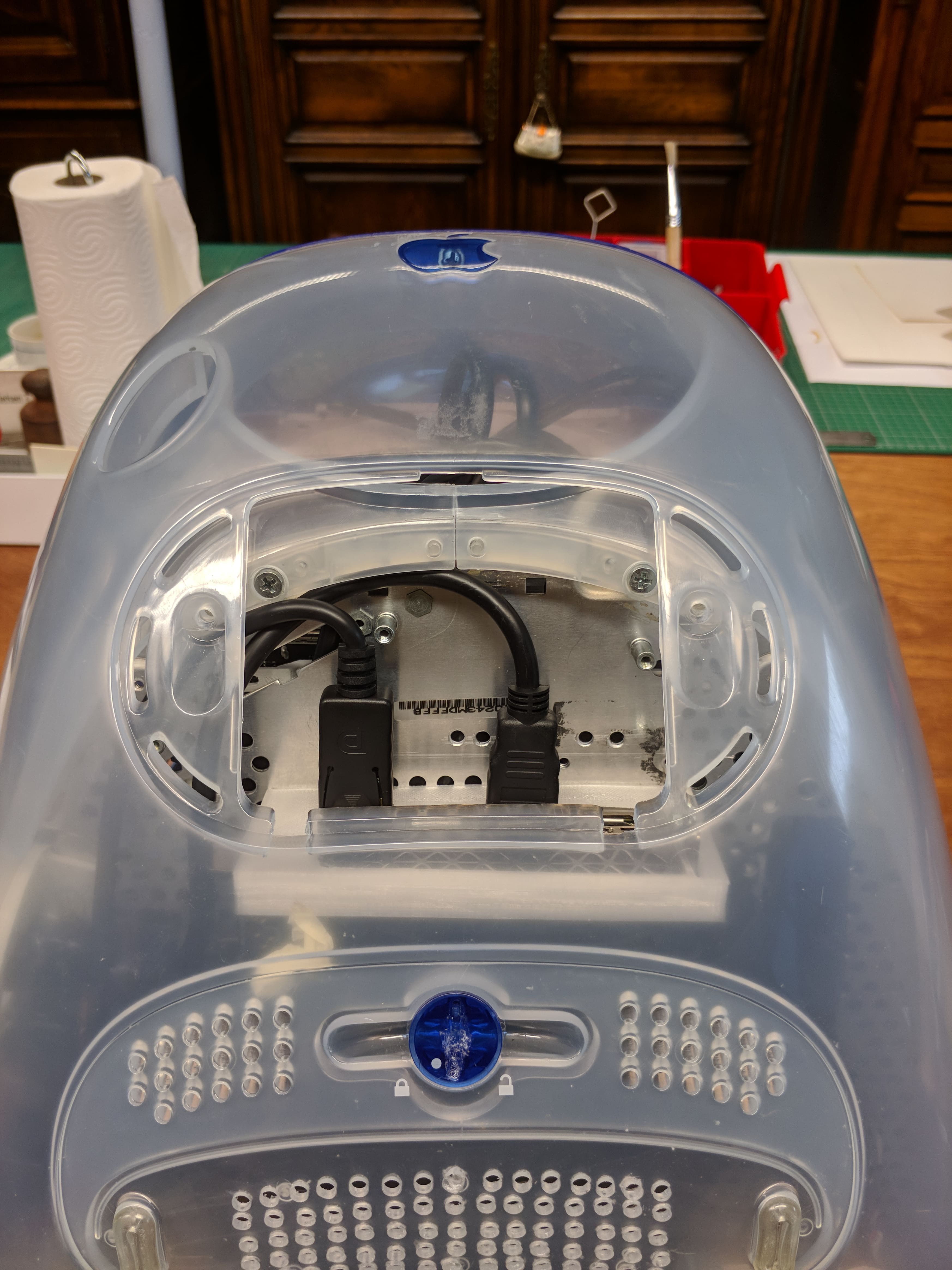
Discussions
Become a Hackaday.io Member
Create an account to leave a comment. Already have an account? Log In.